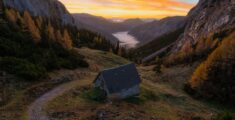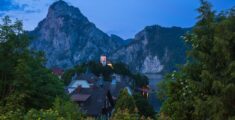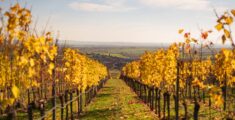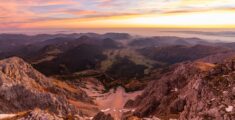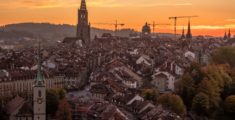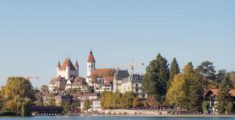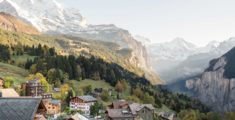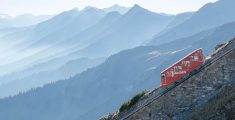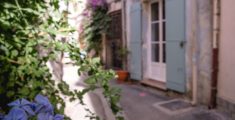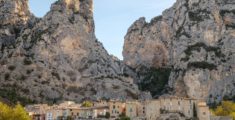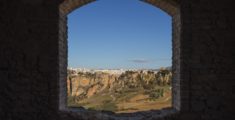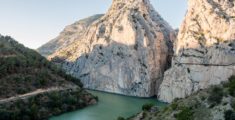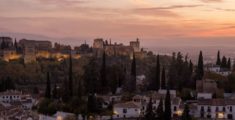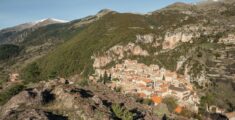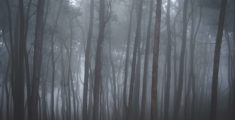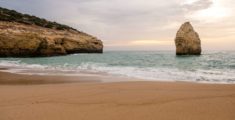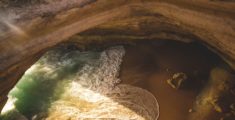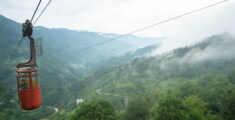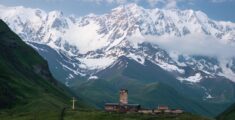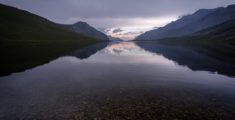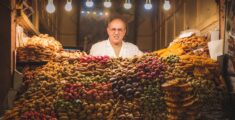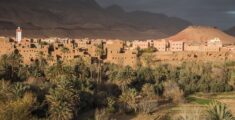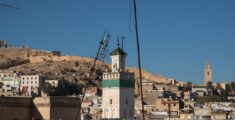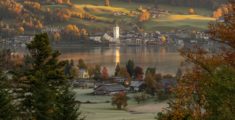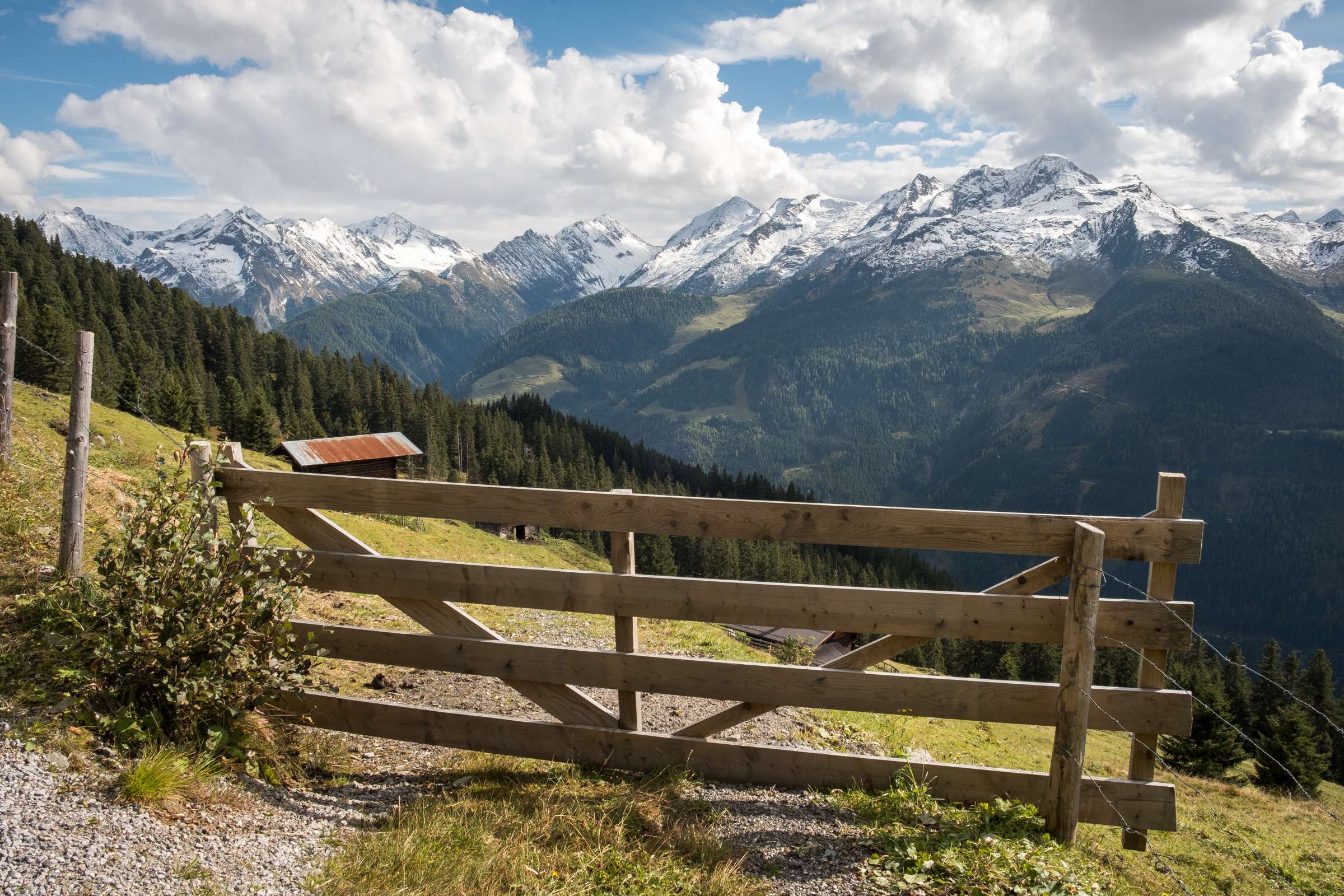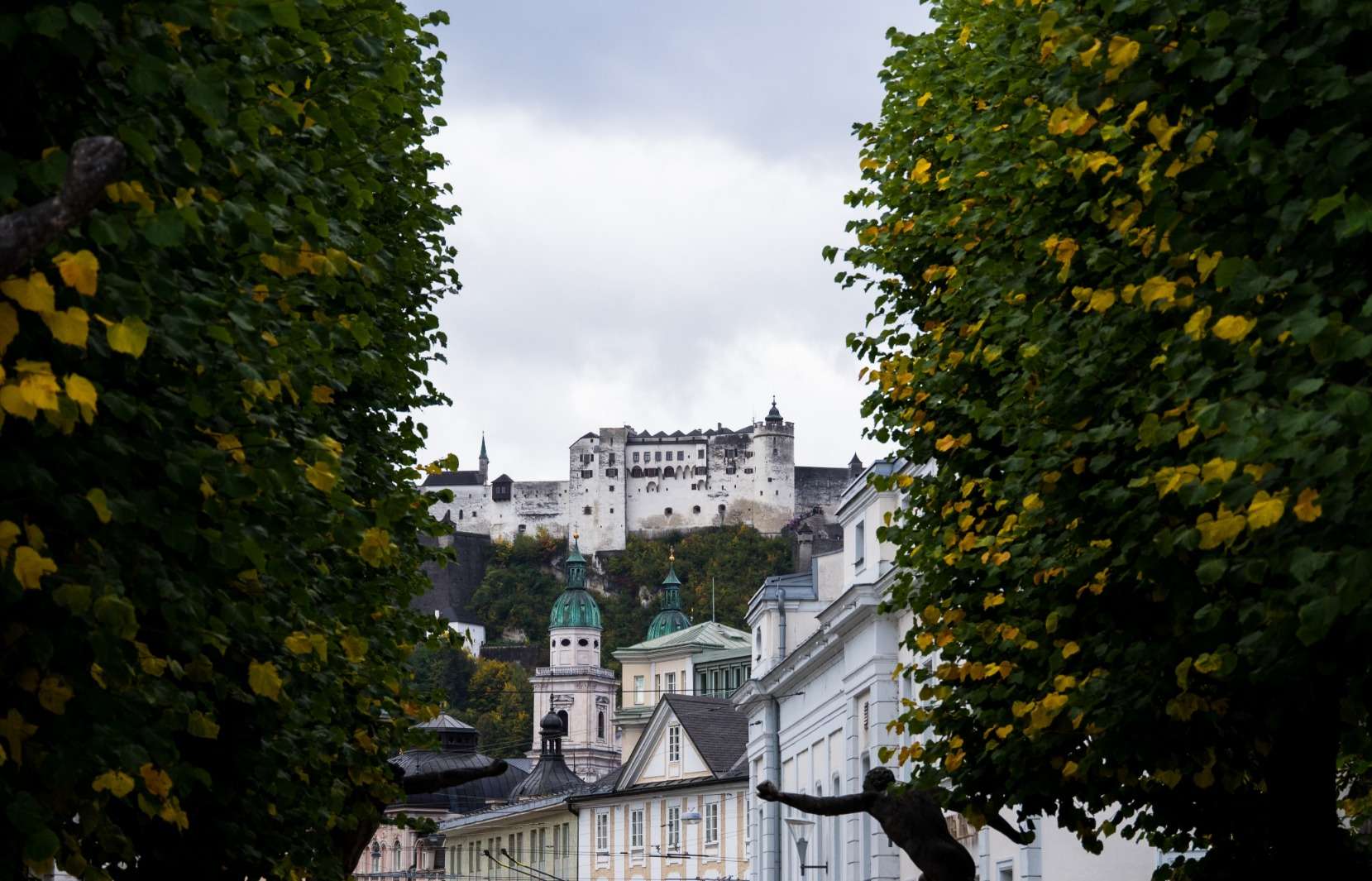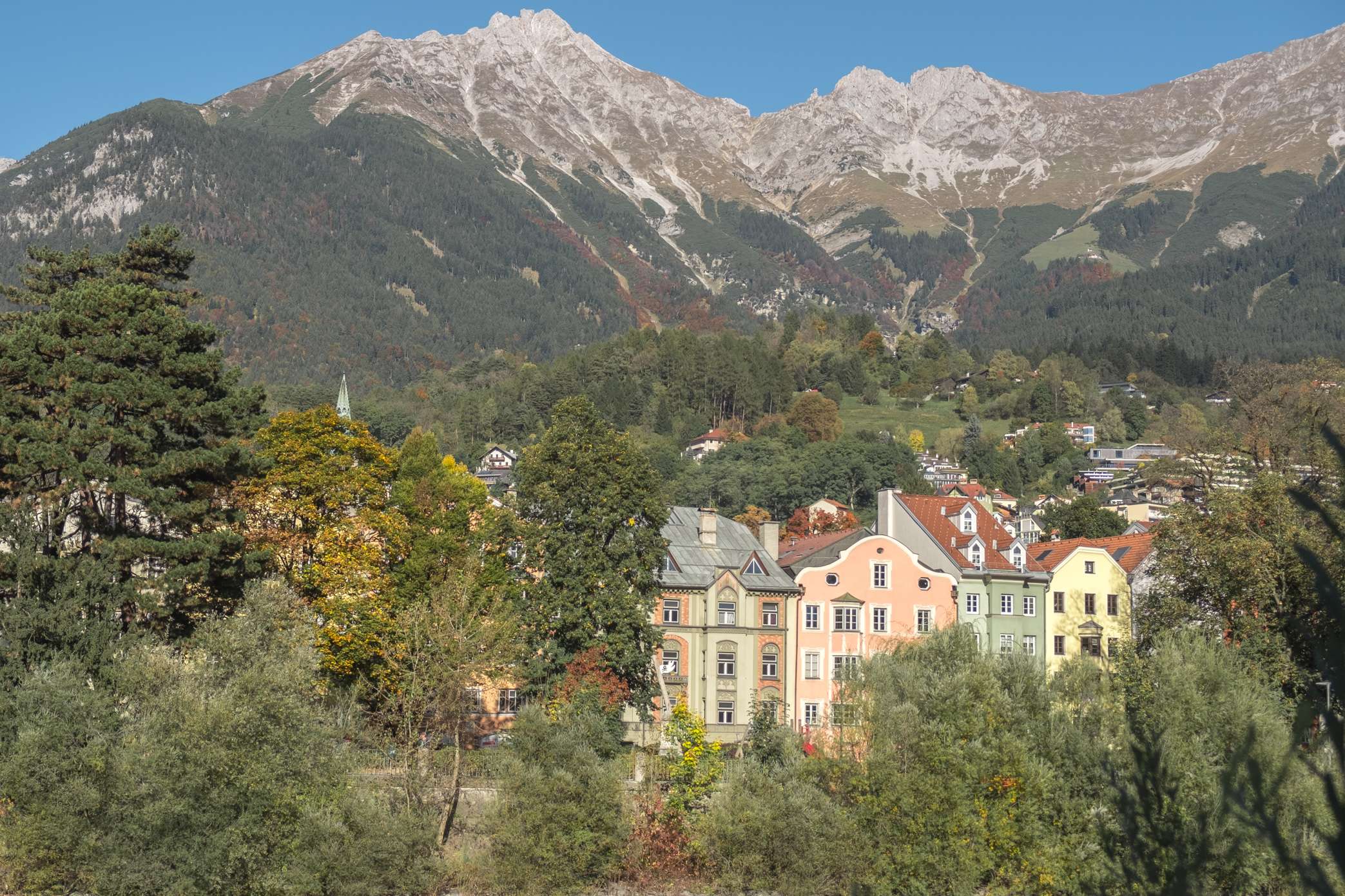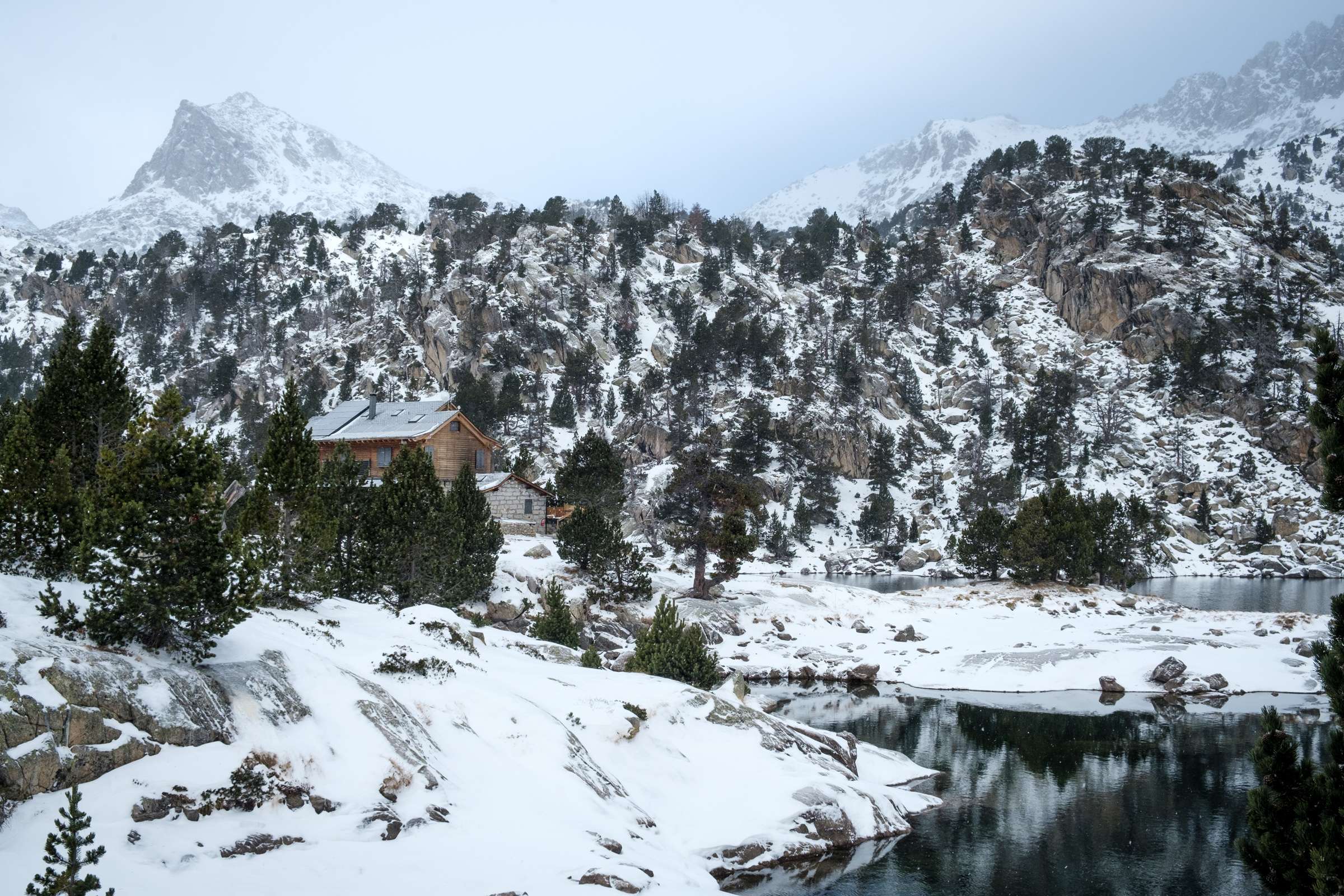Out in the grape outdoors – Wine walks in and around Vienna, part I: Kellergassen
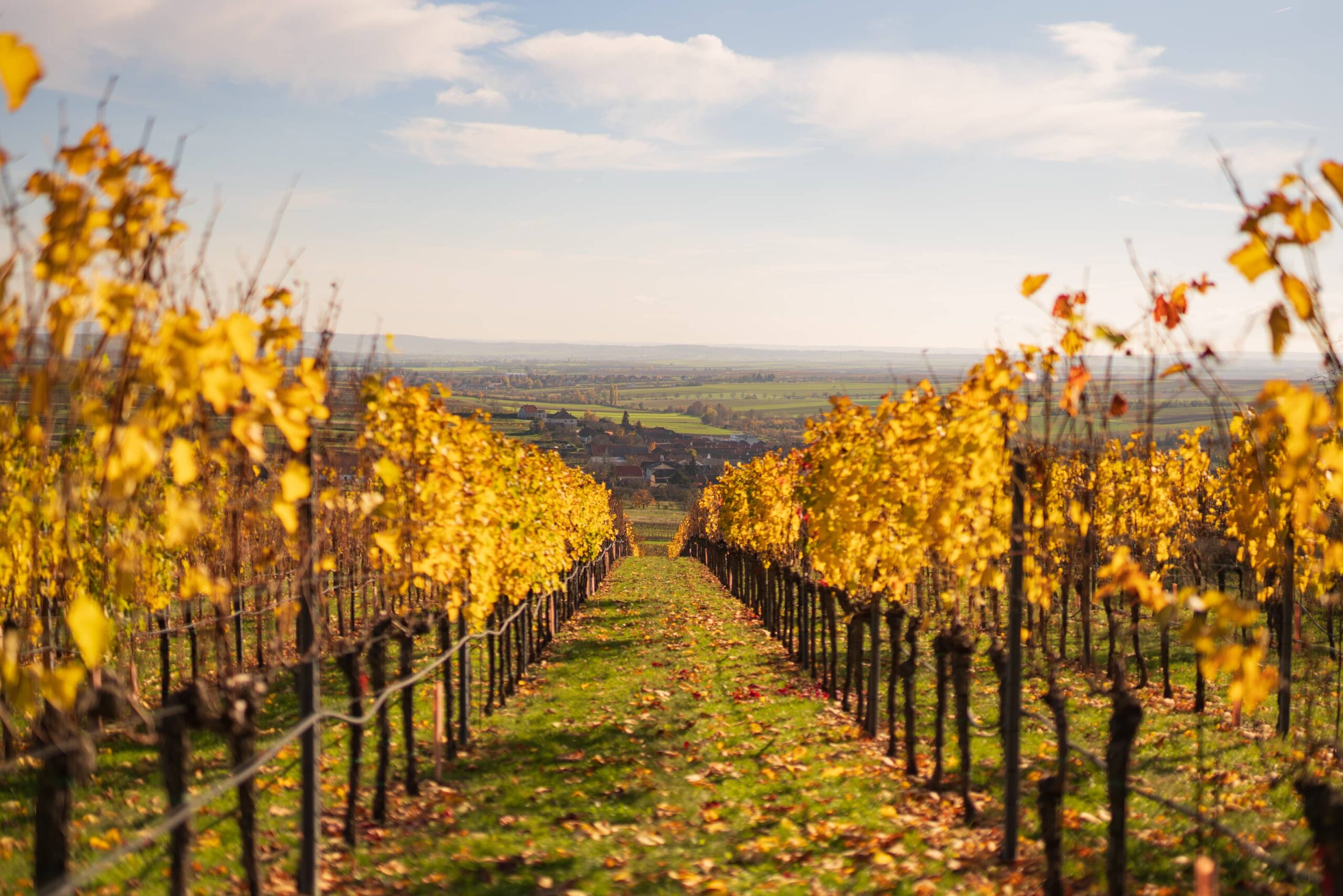
While we don’t usually say “no” to a nice glass of wine, what we love most about living in the middle of wine country is strolling through the soft, rolling hills, lined with vines whose colours transform throughout the year. Whether early morning, in the peak of the afternoon or at sundown, whether spring, summer or autumn (winter is admittedly not the best season for vineyards) – there is nothing more relaxing and rejuvenating than frolicking through lines and rows of vines, strewn with the prettiest flowers, and discovering the occasional Kellergassen.
We structure this topic in three posts: wine areas south of Vienna, vineyards in Vienna (with bonus vegan recommendations at the end), and Kellergassen (wine cellar streets) that you can reach from Vienna. We’ll start with the Kellergassen as they are really special to Austria. Off you go, get yourself a glass of grape juice of some sorts and get reading!
Skip to the bottom for a map with all the destinations!
Austria’s “Kellergassen” – A Hidden Gem in Wine Country

Ausg’steckt is! If you’re in Austria and craving a glass of wine in the open air, you probably think of the traditional Heurige or Buschenschank. But if you’re looking to try something a bit different, I highly recommend visiting a Kellergasse. These picturesque lanes, often found in Austria’s wine-growing regions, are lined with rows of small, colorful houses. But don’t be fooled by their charm—no one lives in these homes. Instead, they house wine cellars and pressing rooms, earning them the nickname “villages without chimneys.” The Kellergassen are an important part of Austria’s cultural heritage, and many of these buildings are under historical protection.
When you peek through one of the often open doors, you’ll typically find a staircase leading down into a cool, larger room, slightly below ground level. Even further back, you’ll discover storage cellars where wine was once pressed and stored. Though wine-making has largely moved elsewhere, many of these buildings have been repurposed as cozy tasting rooms where local winemakers serve their finest. A particular highlight in these areas is the annual Kellergassenfeste, where the cellar houses throw open their doors for a big celebration, often in September. Keep in mind that the exact dates vary by location, so be sure to check with our reception for the latest updates.
How to explore them
If you’re up for a bit of adventure, cycling is a fantastic way to explore all of these Kellergassen! It also gives you a bit more flexibility as public transport is quite limited on the country side. If you plan to go by bus or train, make sure to check the timetables so you don’t get stuck!
Here are nine Kellergassen that you shouldn’t miss:
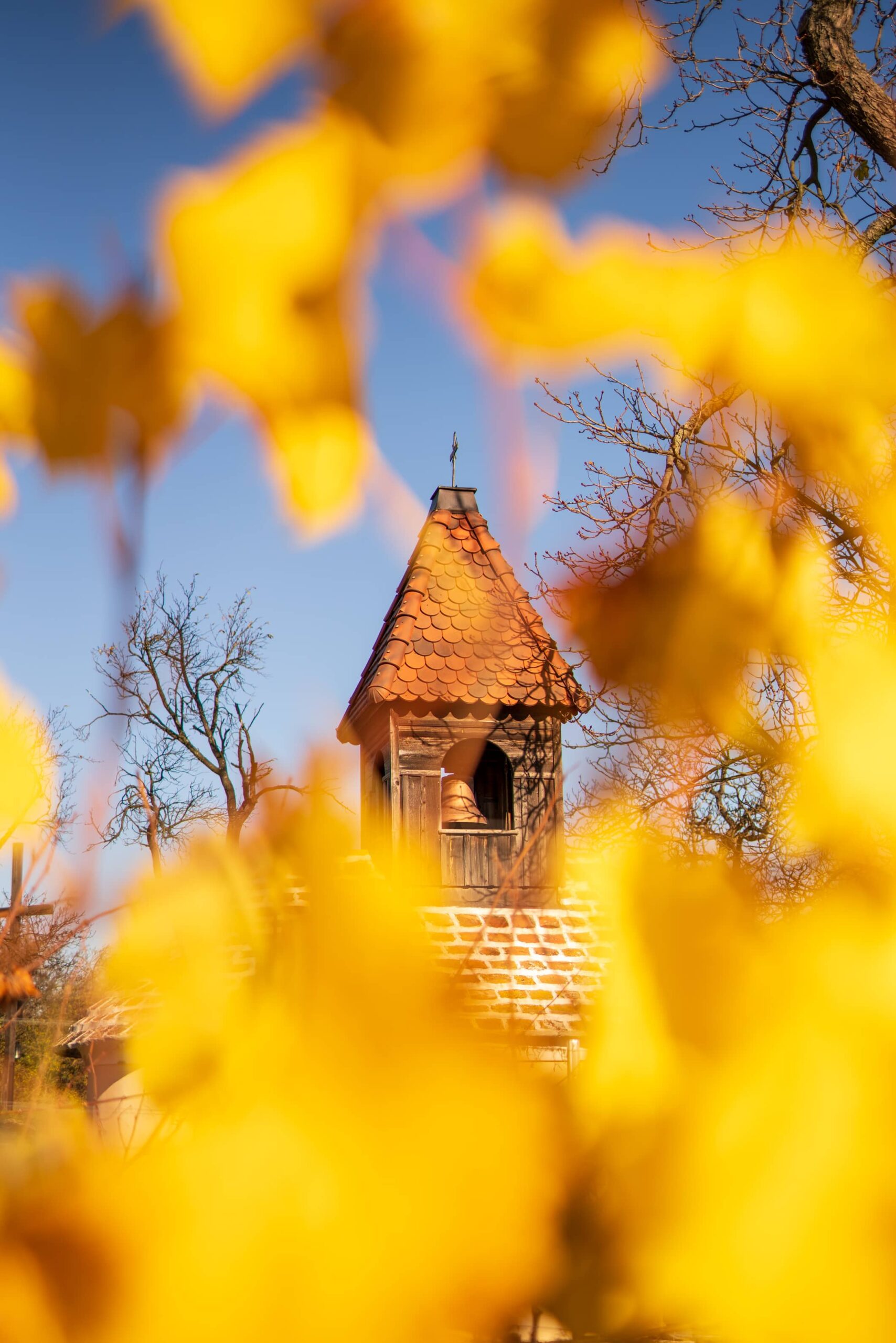
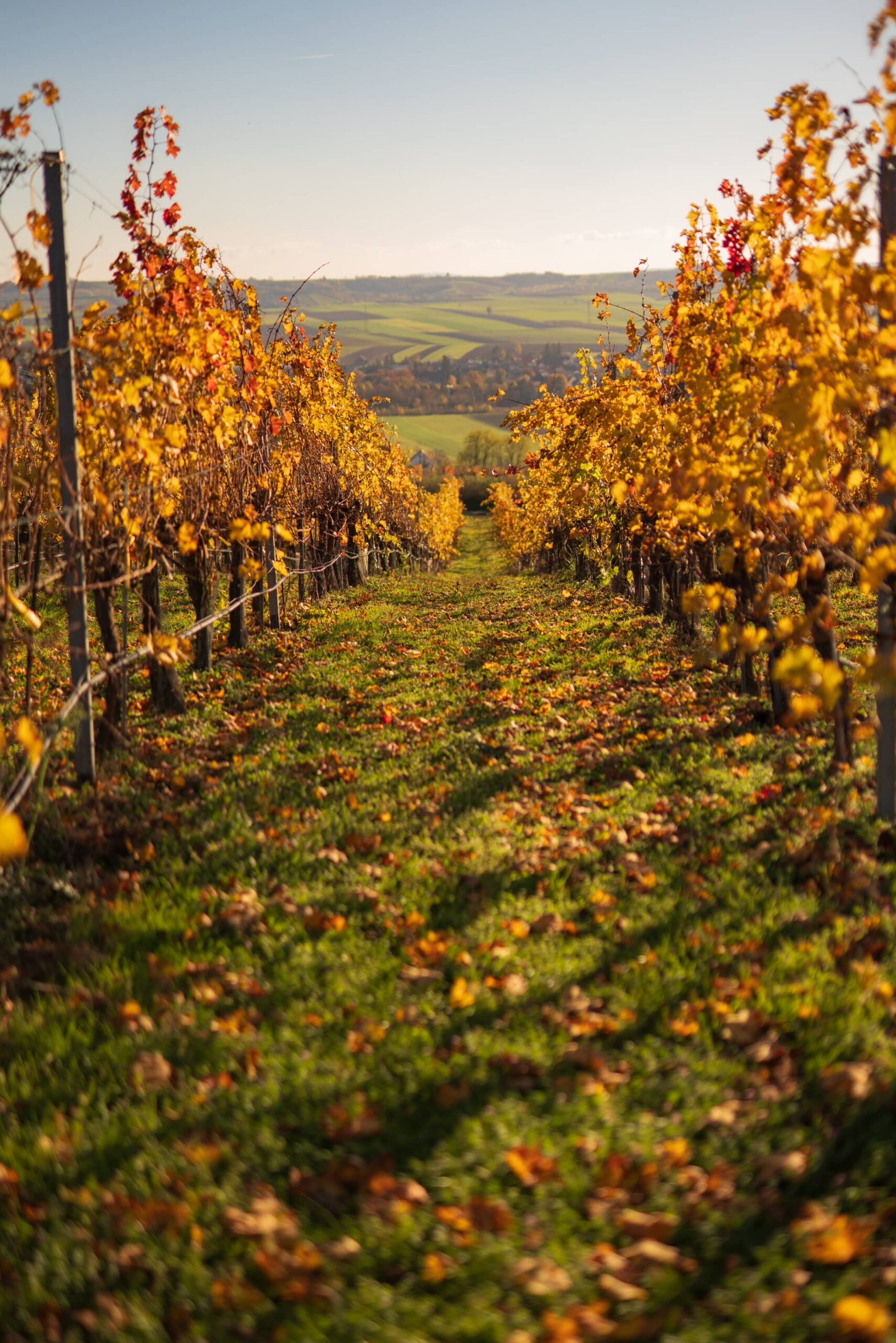
1. Stammersdorfer Kellergasse
Stammersdorfer Kellergasse is the easiest to get to from Vienna. To get there, take the tram line 30 to the end station, Stammersdorf. Just use Googlemaps and set your destination as Stammersdorf. The Kellergasse itself is a short walk from the tram station, but there are already lots of pretty old buildings to look at. The main Kellergasse begins here.
In our opinion the best way to discover Kellergassen is to just walk around and explore all the lanes, go back and forth, up and down – you get the picture. There’s always something pretty that will catch your eye. Otherwise, if you want a more structured walk then you can try the Vienna city hiking path 5. It’s around 10KM and takes from 3 to 4 hours.
There are many paths leading around and to the top of Bisamberg (a small hill/mountain). At the top there is a restaurant and a play area. Another particularly nice part we enjoyed was Jungenberggasse, which boasts a romantic cobbled balcony path with wonderful views over Vienna. We witnessed a magnificent winter sunset here! We can imagine it’s rather enjoyable to enjoy a glass of wine there, in the warmer months.
- Highlight: The most famous Kellergasse in Vienna.
- Address: 1210 Stammersdorf
- How to get there: Take bus lines 228 or 125, or tram line 30 to Stammersdorf, followed by a short walk towards Bisamberg.
- Walking: Vienna city hiking path 5
- Biking: The tour “Around Bisamberg” takes you in a circle around the hill where the Kellergasse is https://www.fahrradwien.at/route/rauf-auf-den-bisamberg/
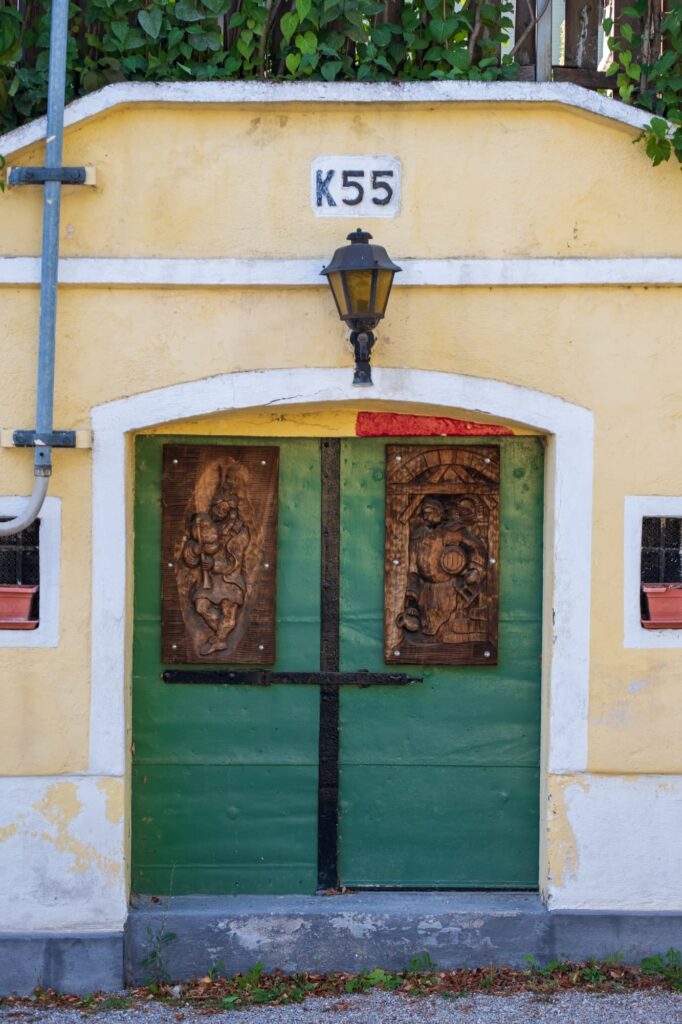
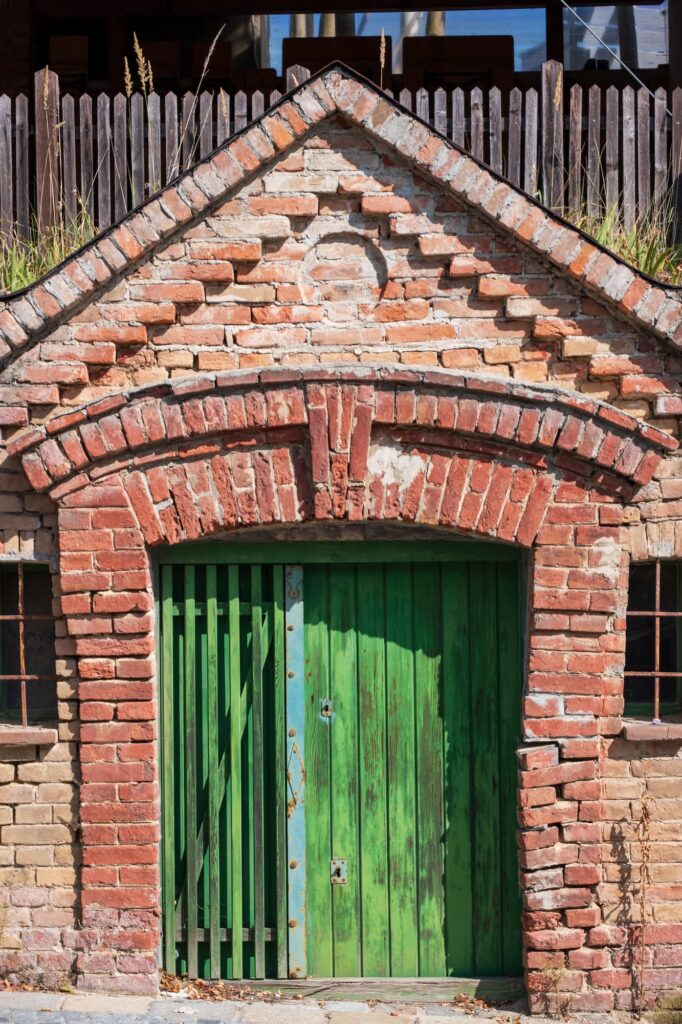
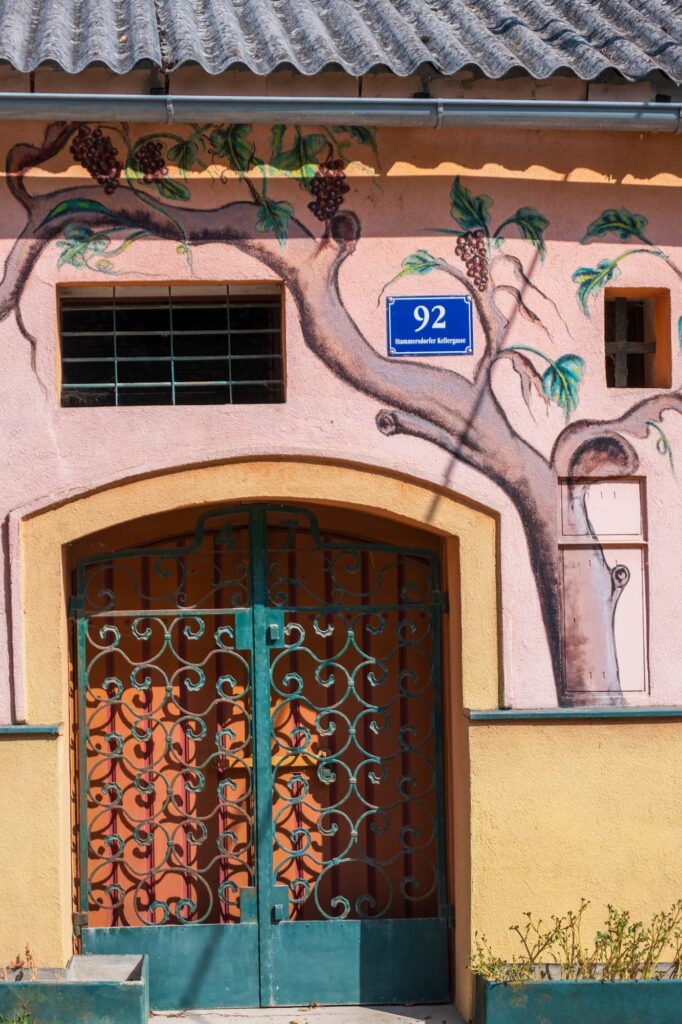
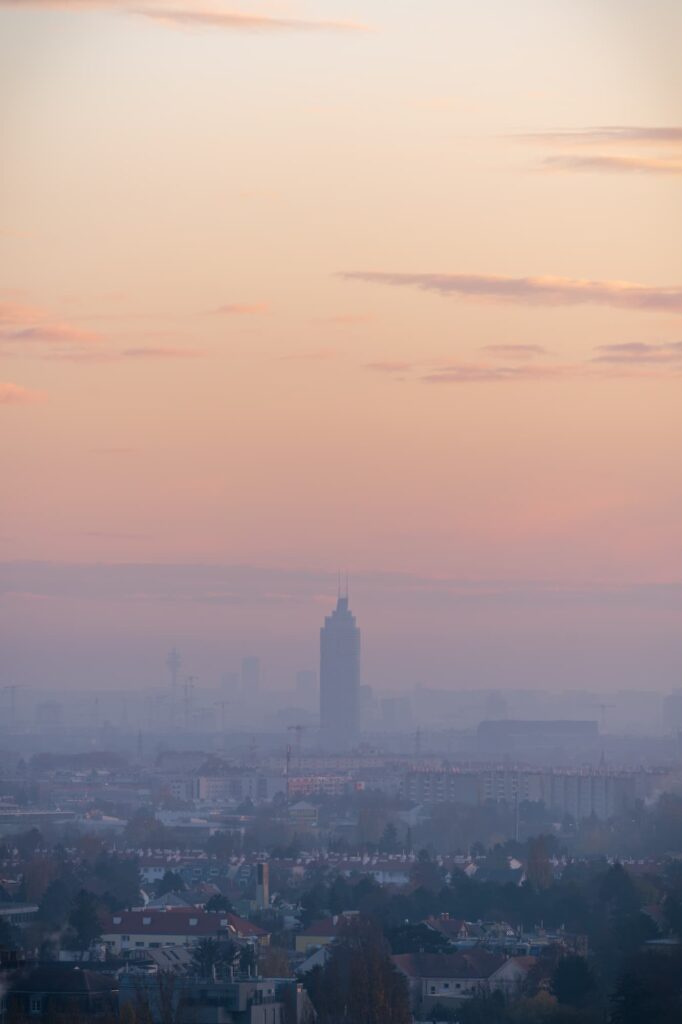
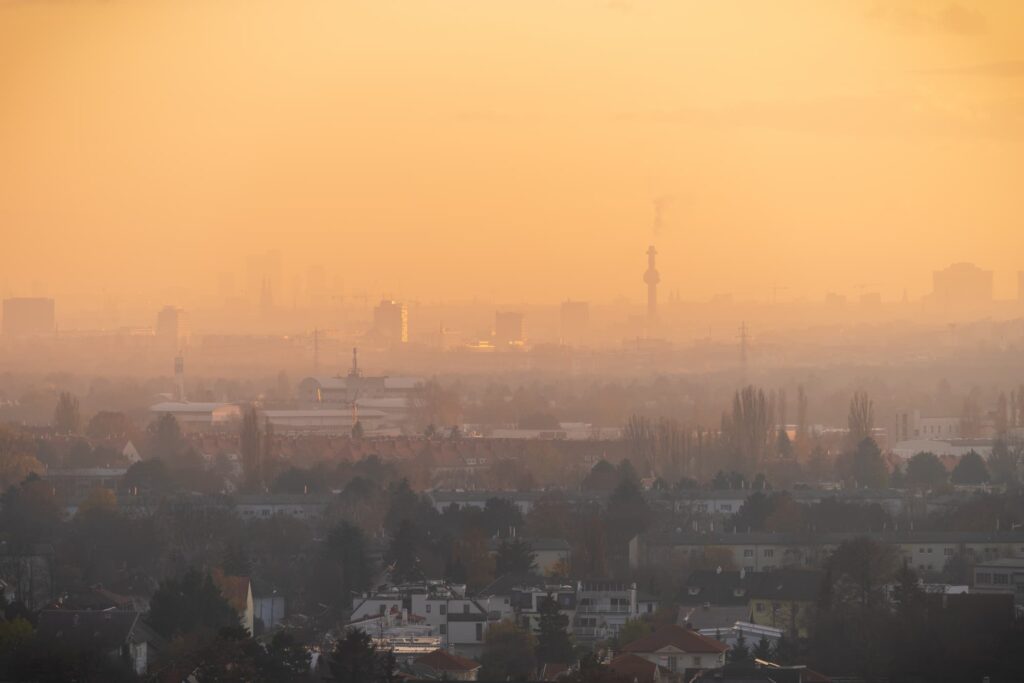
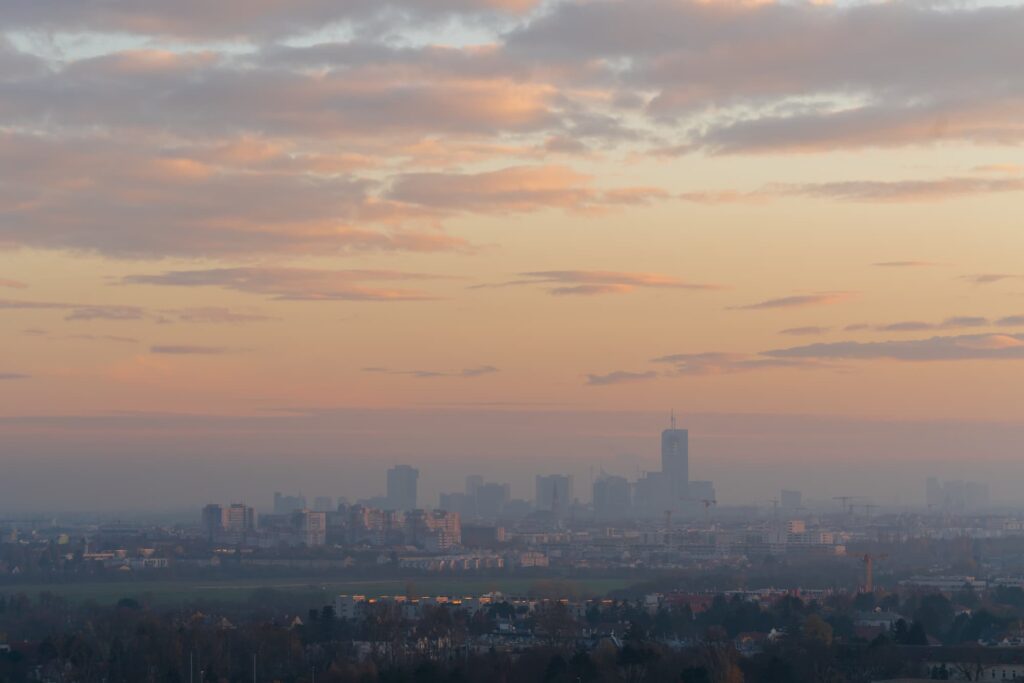
2. Wora Kellergasse
After visiting Krems numerous time for adventures in the Wachau, we often saw the terribly cute Kellergassen whizzing past from the comfort of the regional train. We always said we’d come and explore and so one sunny late September weekend, we finally did! We packed some sandwiches and snacks and rode our bikes down the Gürtel to Spittelau, where we boarded the REX 4 train, destination Fels am Wagram. The plan was to hit a couple of destinations, the first being Wora Kellergasse. We admired the cute old buildings and snacked the last of the remaining forgotten-about grapes. We even picked mouthwatering crisp apples from the nearby trees. An odd walnut too, though they had to be transported home as we rather carelessly left behind our nutcracker.
From here you could explore the nearby Kellergassen of Feuersbrunn (detailed below) with their romantic viewing tower. However, we decided to head towards the village of Grafenwörth, in particular the Palace Grafenegg, a stunning Tudor style castle with large regal gardens. You can pay to enter the inside, but otherwise the gardens are free to explore and were more than enough to keep us occupied.
The rest of the day seemed to escape us and as the sun began to dip, we decided to ride to Krems and grab some dinner before taking the train back to Vienna. Our favourite restaurants are Schmid’s and Mezcal. We would also recommend staying the night in Stein, a small medieval village just outside of Krems, built in the tiny section between the Danube and the steep rocks behind it. It’s one of our favourite places in the Wachau, but admittedly that list keeps on growing.
- Highlight: Stunning, open views of the pre-Alps to the south.
- Address: 3481 Fels am Wagram
- How to get there: Take the REX 4 train from Franz-Josefs-Bahnhof or Spitelau to Fels am Wagram, then walk about 20 minutes to the Kellergasse.
- Walking: Wora panorama path https://www.weinbergwandern.at/region/wagram/der-wora-panoramaweg/ (includes picture descriptions and GPX)
- Biking: https://www.bergfex.at/sommer/niederoesterreich/touren/radfahren/25068,rundtour-10–radkunstmeile/
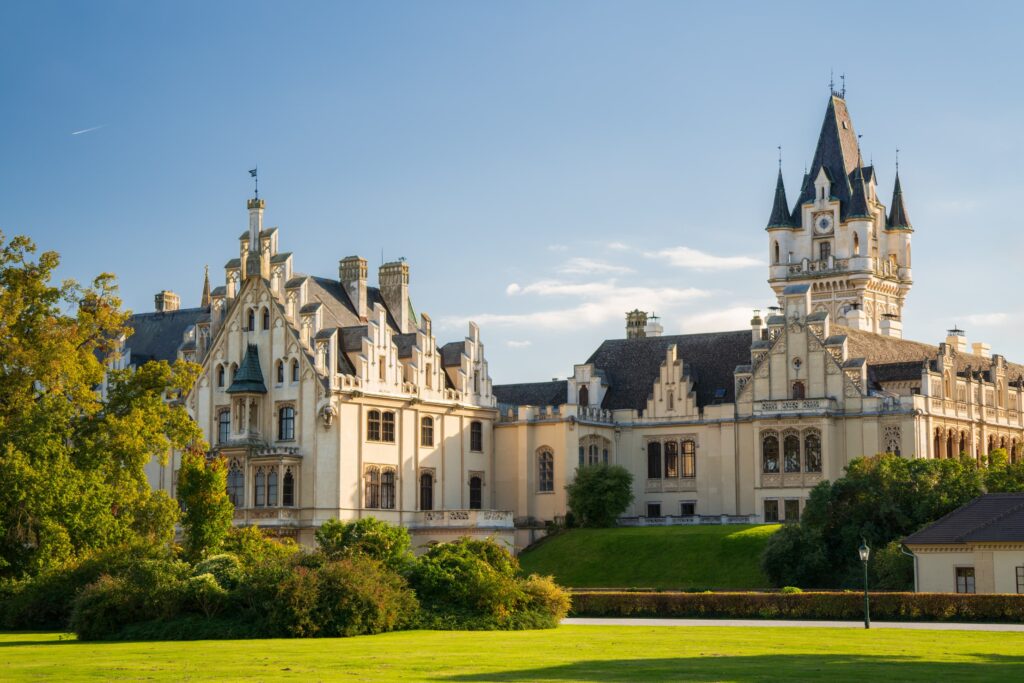
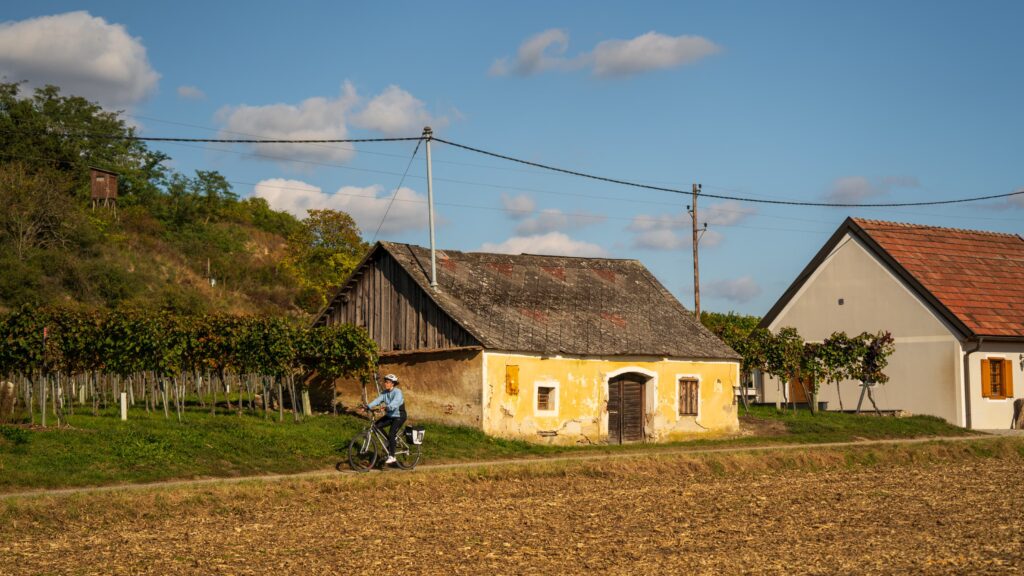
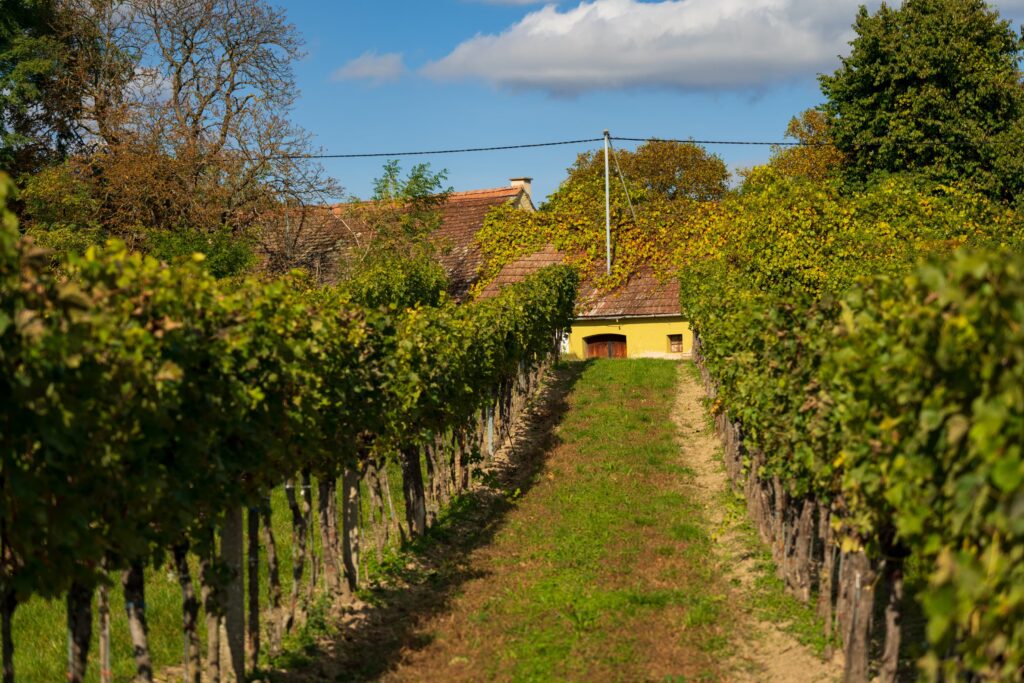
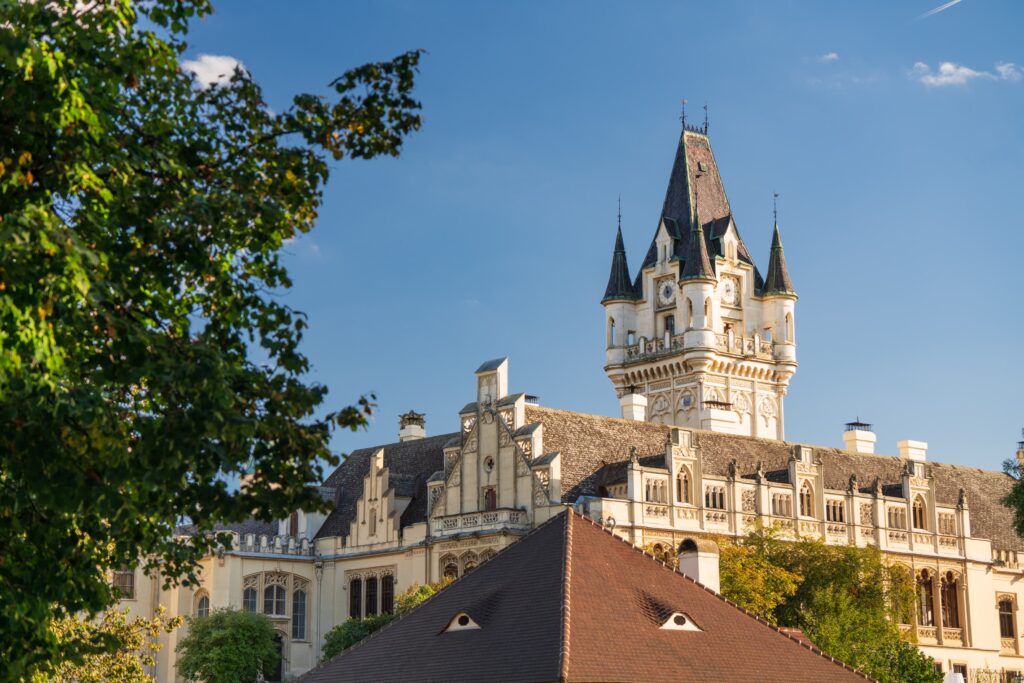
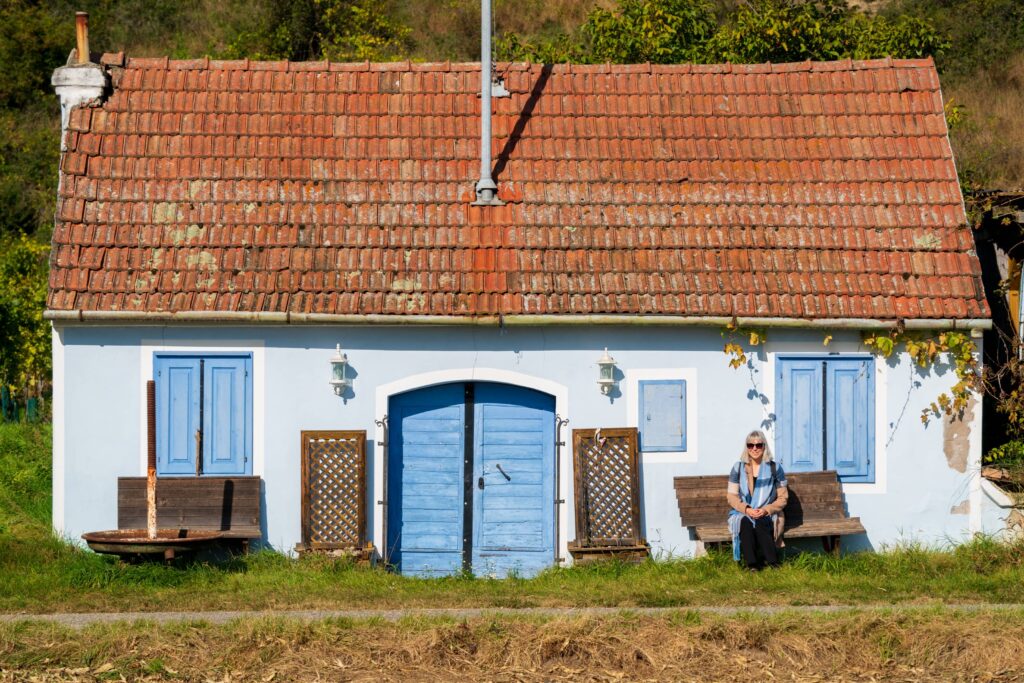
3. Pillichsdorfer Kellergasse
Pillichsdorf is apparently one of the largest connected cellar streets in all of Europe. We’re slightly wary of these facts because it appears that every Kellergasse is either longest, oldest, largest, deepest or by some or the other bizarre metric. That’s not to downplay the experience, but maybe it’s not the most important fact!
Without a bike, there’s a bit of a walk from the train station Obersdorf NÖ Bahnhst, but it’s not so bad. Take the REX 2 or S2 train directly from Floridsdorf. Then set your destination to here and take a leisurely walk. Along the way someone was selling fresh home-grown tomatoes from a basket out front of their house so naturally we bought a few for dinner.
The old cobbled alleyways are most attractive feature here and almost devoid of any other people. We strolled around admiring the buildings and frolicking in the sun flower fields with the late summer sun. A little later we heard some commotion and decided to explore what all the fuss was about, soon learning that on this very day Pillichsdorf is hosting a festival in the Kellergasse, complete with a brass band. We had a few hours so we cycled through the local villages exploring more Kellergassen, for example in Groß-Engersdorf, where there is also a very pretty church.
If it tickles your fancy, there is also a very interesting train museum: Railway Museum Strasshof in the nearby town of Strasshof an der Nordbahn, complete with some fascinating relics. Well worth a visit in our opinion!
Later on we headed back to Pillichsdorf and enjoyed the cheap delicious local wine, the brass band, the commotion and the feeling of being transported back to an easier time.
- Highlight: One of the largest, continuous Kellergassen in Europe.
- Address: 2211 Pillichsdorf
- How to get there: Take the train from Floridsdorf to Obersdorf, followed by a half-hour walk to the Kellergasse.
- Walking: https://www.bergfex.at/sommer/niederoesterreich/touren/wanderung/636939,hochleithenwald-kellergassen-huegelgrab/
- Biking: https://www.bergfex.at/sommer/niederoesterreich/touren/radfahren/9055,marchfeldkanal–dampfross-drahteselradweg/
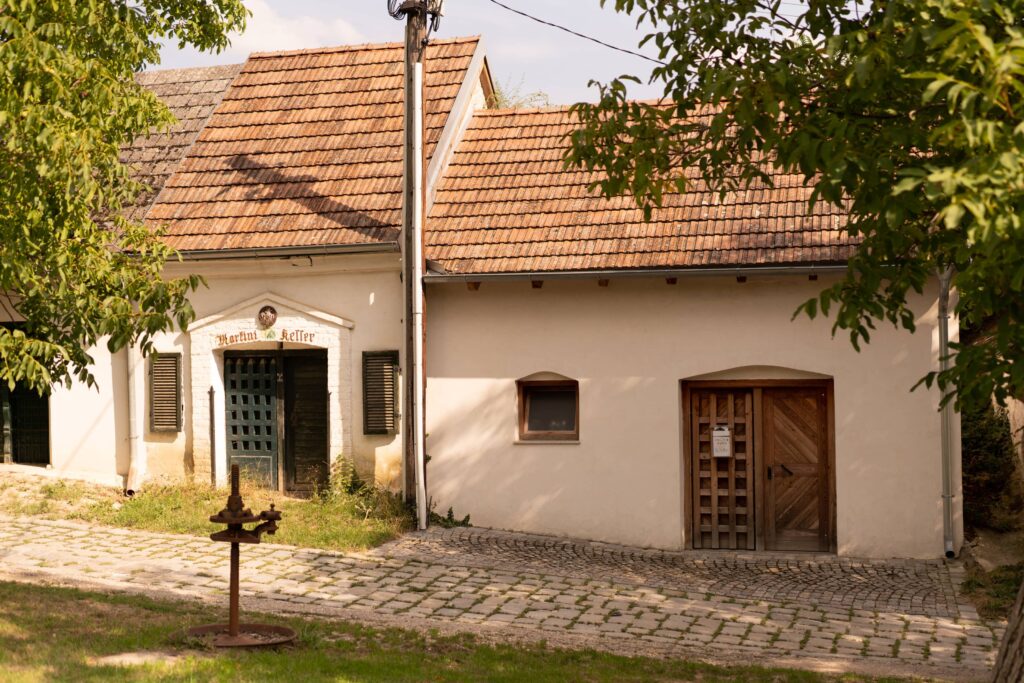
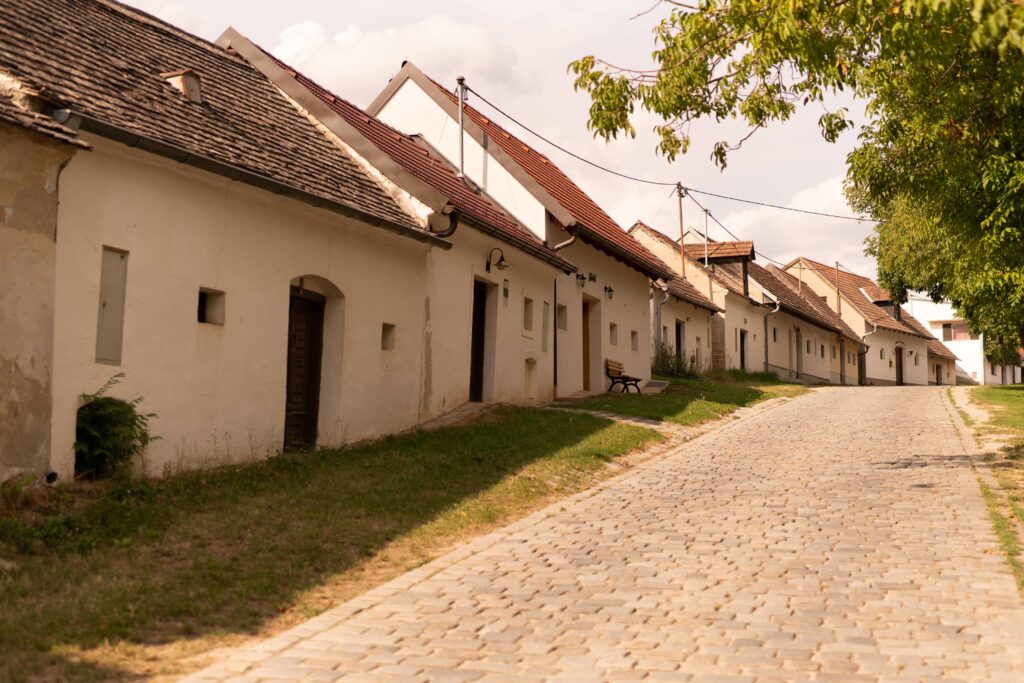
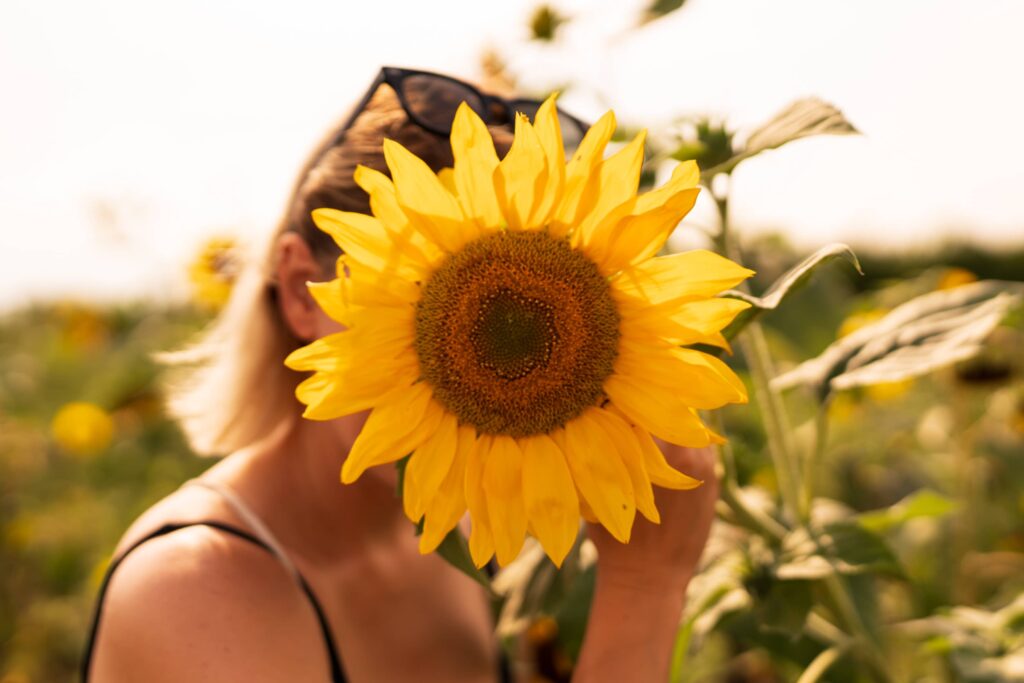
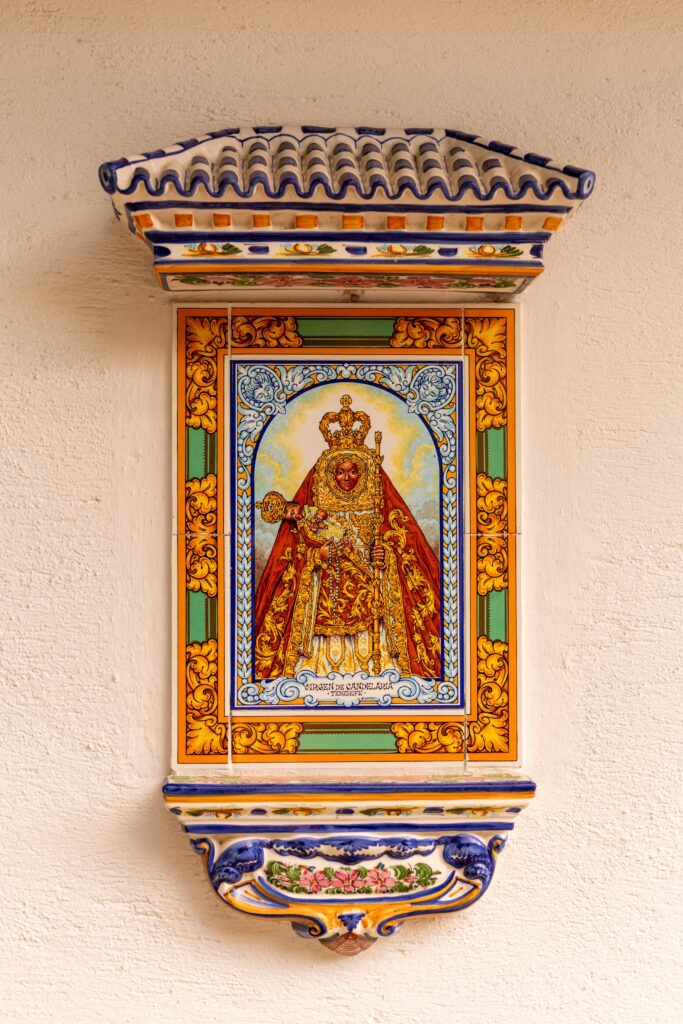
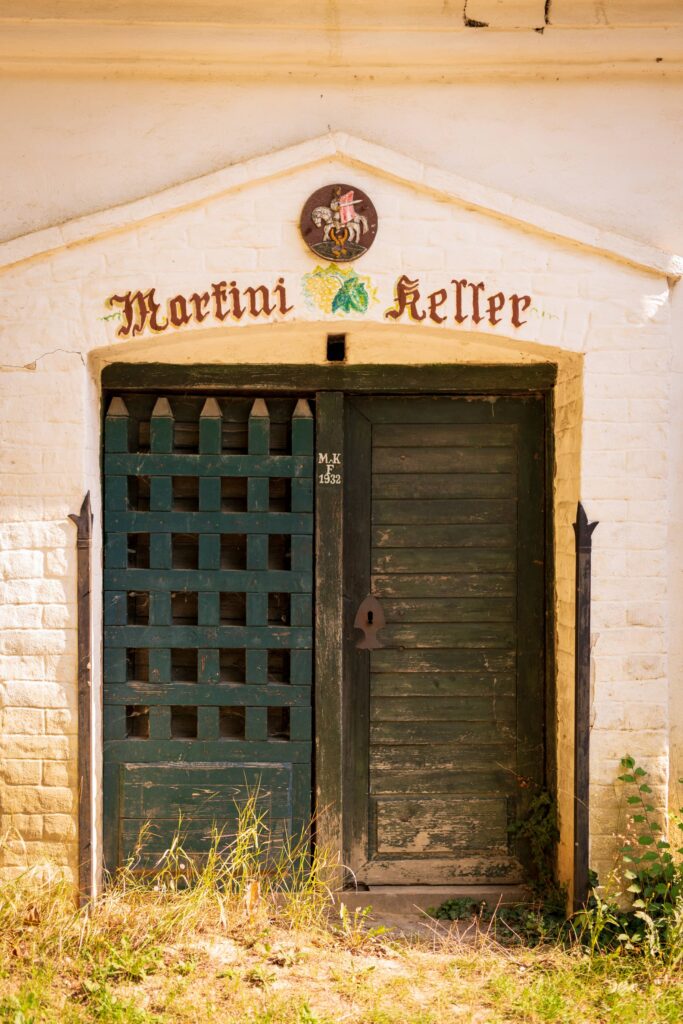
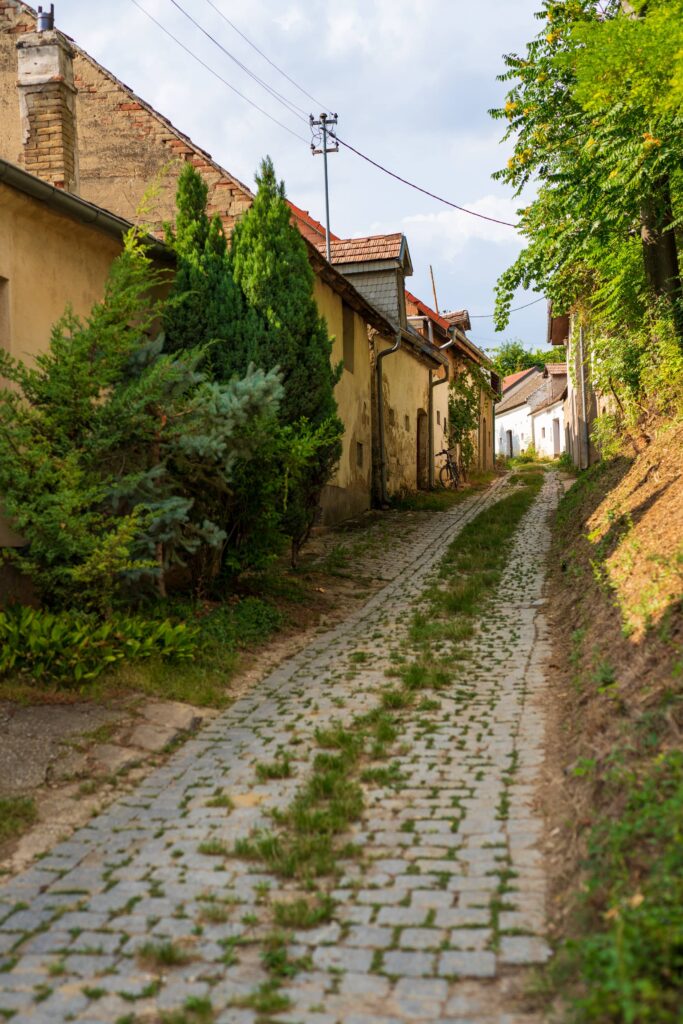
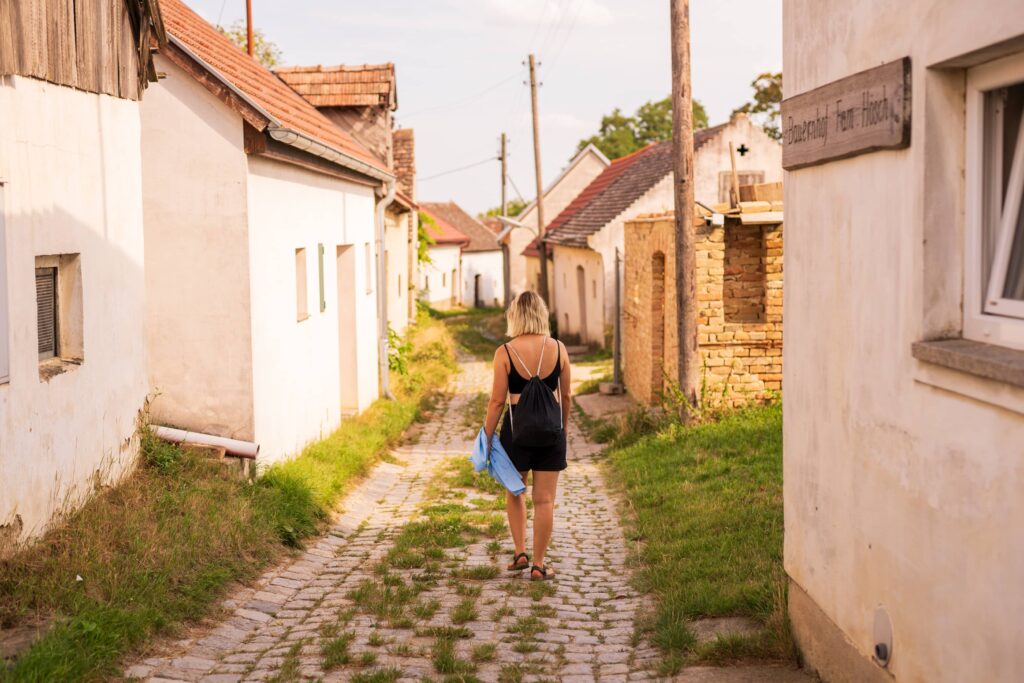
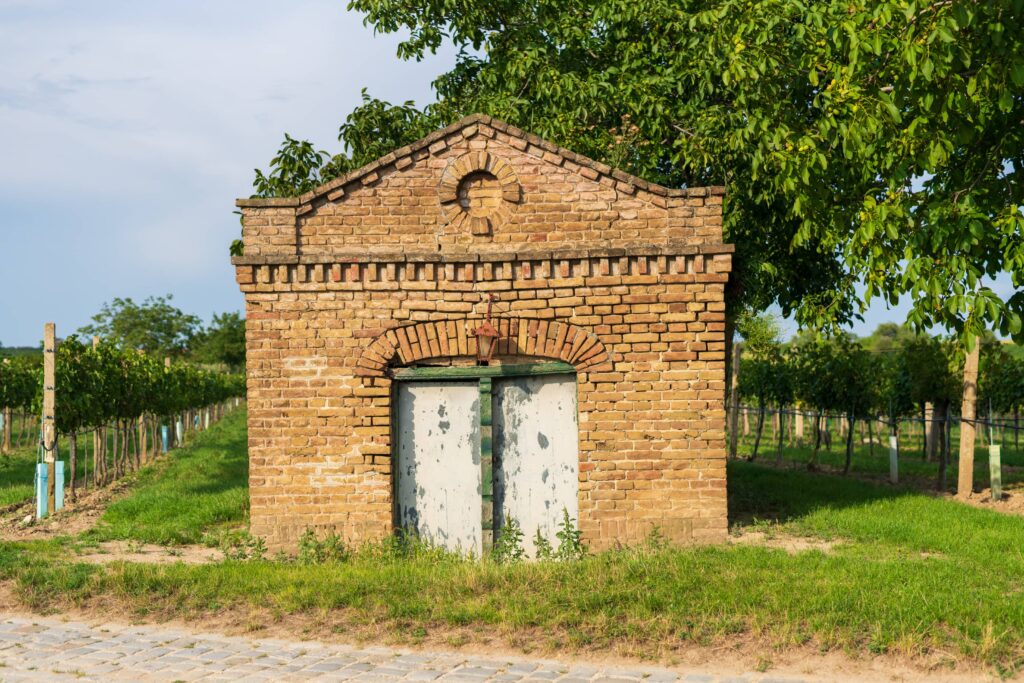
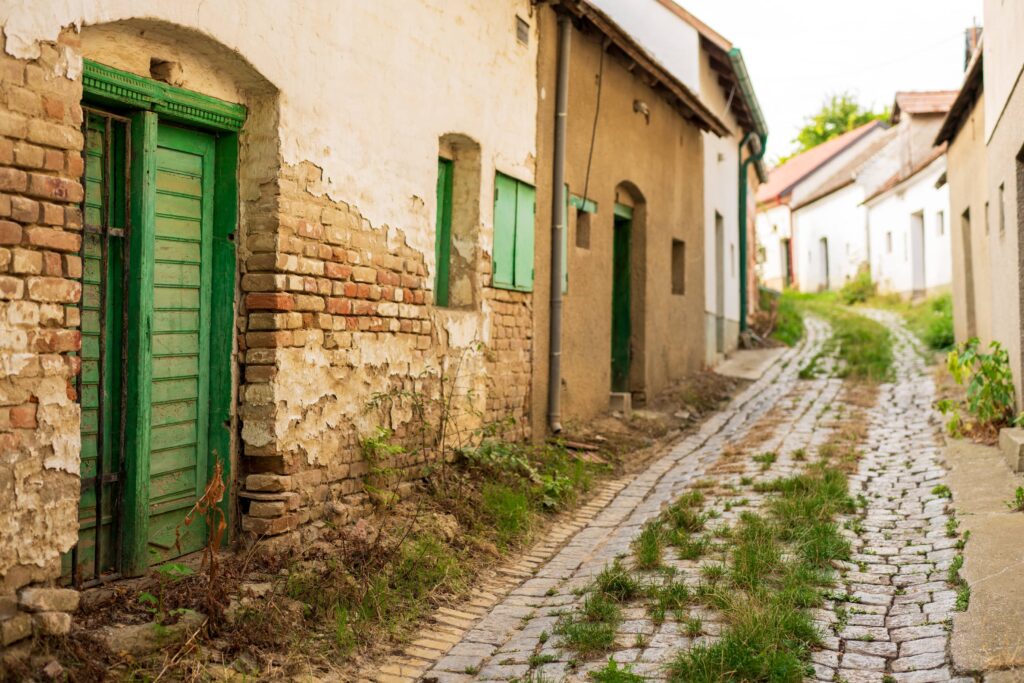
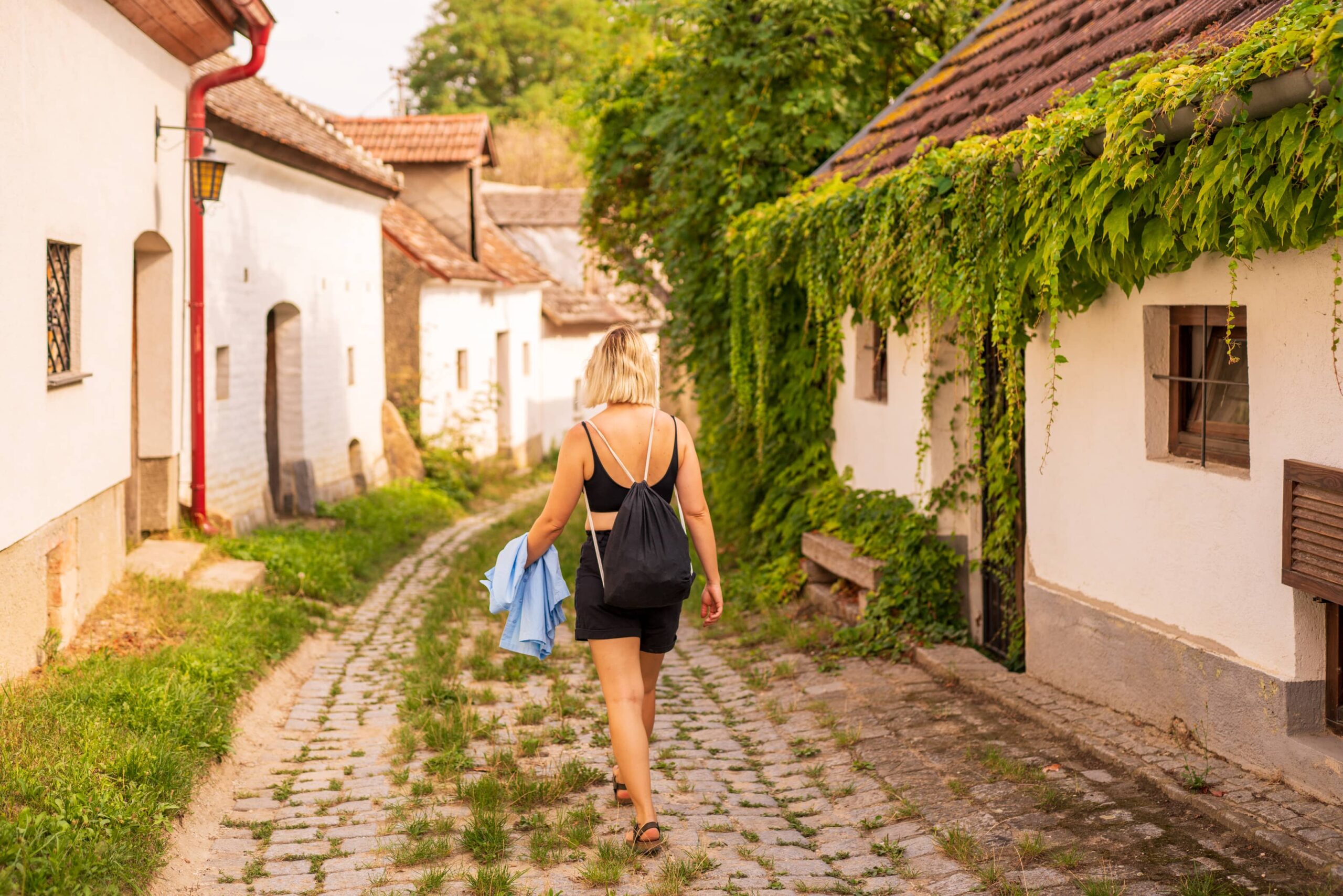
4. Rohrendorfer Kellergasse
Rohrendorfer Kellergasse is a bit more tricky to get to. It’s not too far from some of the others we’ve mentioned so you could combine them with a cycling trip. When we visited, we rode from Langenlois, another cute little village with Kellergassen and a panoramic hiking trail. The ride took about 40 minutes and was very pretty as you climb up to plateau covered in vine yards with views in all directions including the pre-Alps. Anyway, if you choose to visit by train, you’ll take the REX 4 again from Spittelau or Franz-Josefs-Bahnhof and change at Hadersdorf am Kamp to the R 44. Another option is to just get off at Hadersdorf and walk from there. It’s about 1.5 hours, through vineyards and there’s also a nice viewing tower.
Again with the facts, Rohrendorfer Kellergasse is supposedly the longest in Austria at a whopping 1.6KM long. Some of the buildings are from the 14th & 15th century and were built by monks. We noticed some particularly striking decorations on a few of the buildings.
- Highlight: The longest Kellergasse in Austria (1650 meters).
- Address: 3495 Rohrendorf near Krems
- How to get there: Take the train from Franz-Josefs-Bahnhof to Hadersdorf am Kamp, then transfer to Rohrendorf. The Kellergasse is right next to the train station.
- Walking: https://www.bergfex.at/sommer/niederoesterreich/touren/wanderung/686324,hauersteig-rohrendorf/
- Biking: https://www.niederoesterreich.at/a-garten-runde-kremstal or https://www.niederoesterreich.at/a-weingarten-runde-kremstal
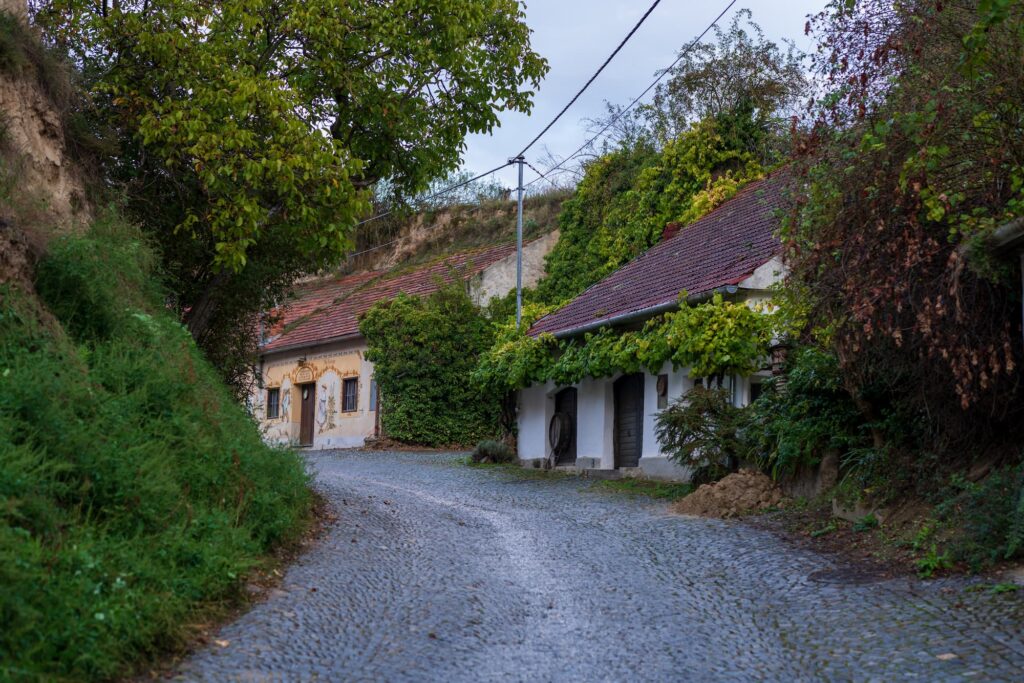
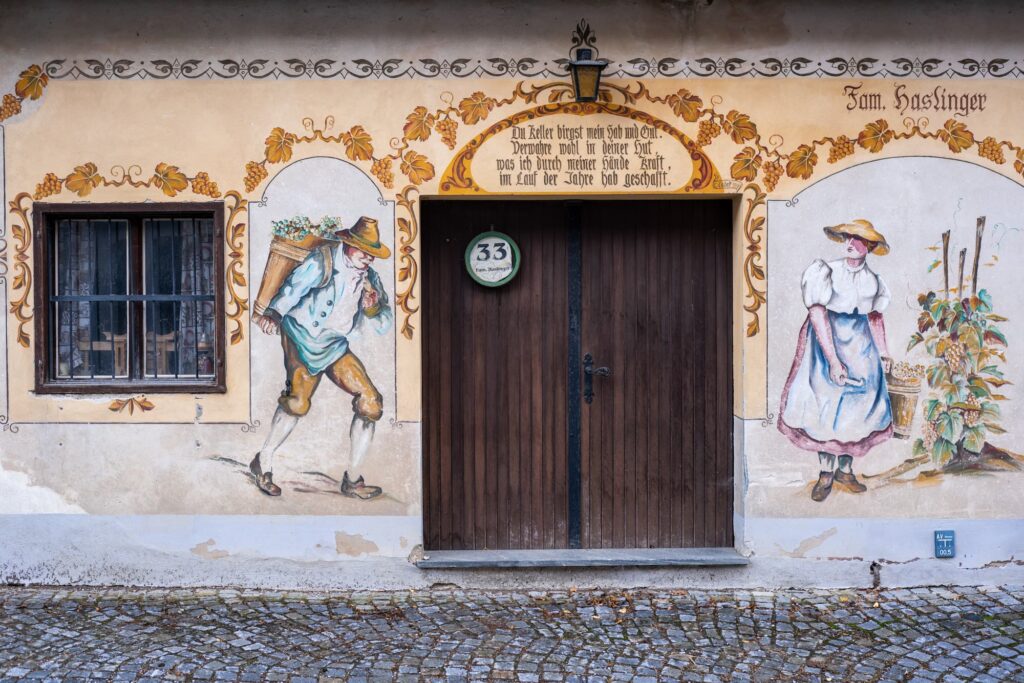
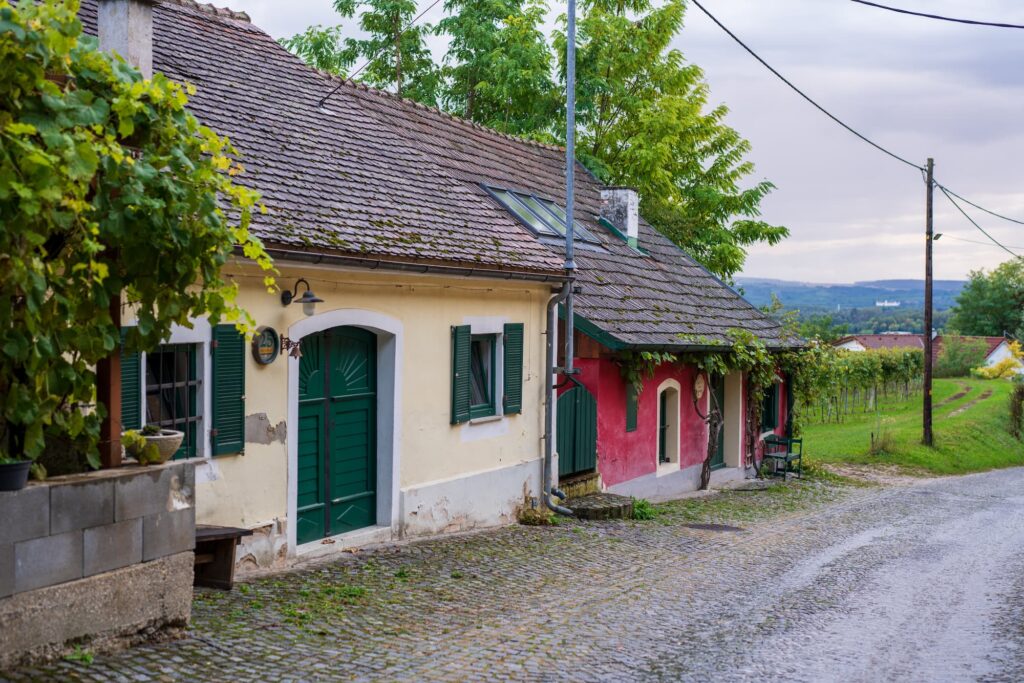
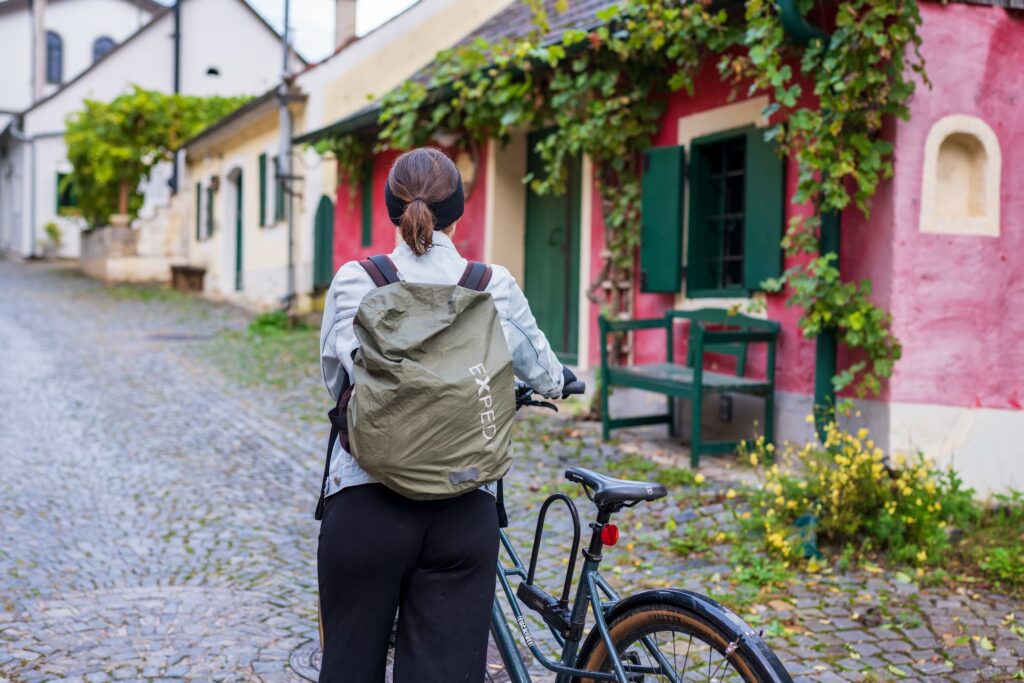
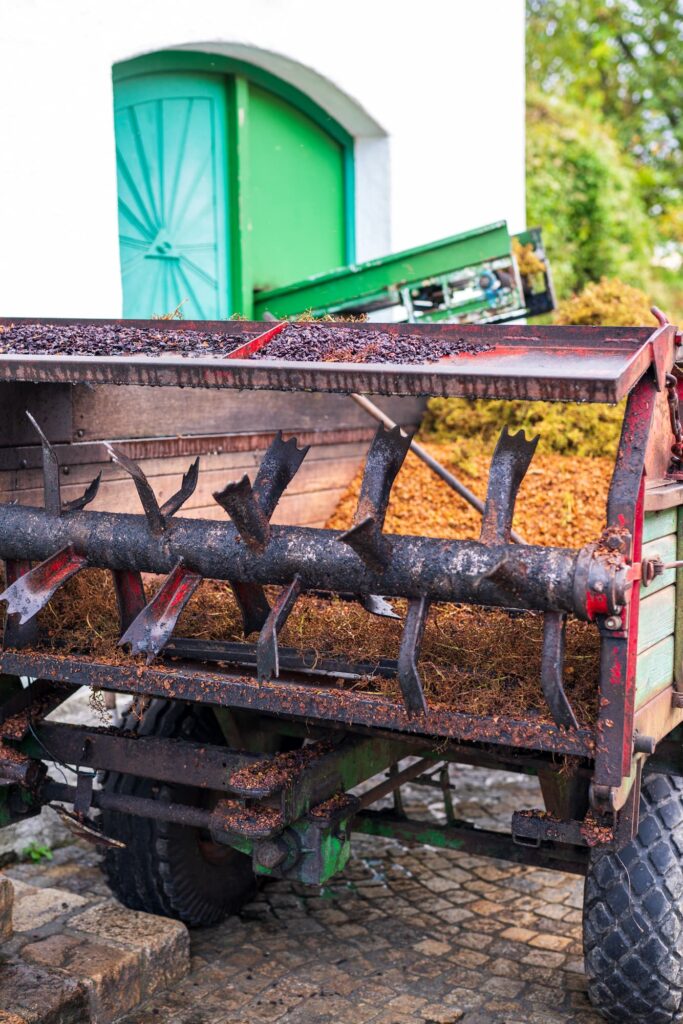
These pictures below were taken along the way from Hadersdorf to Rohrendorfer Kellergasse.
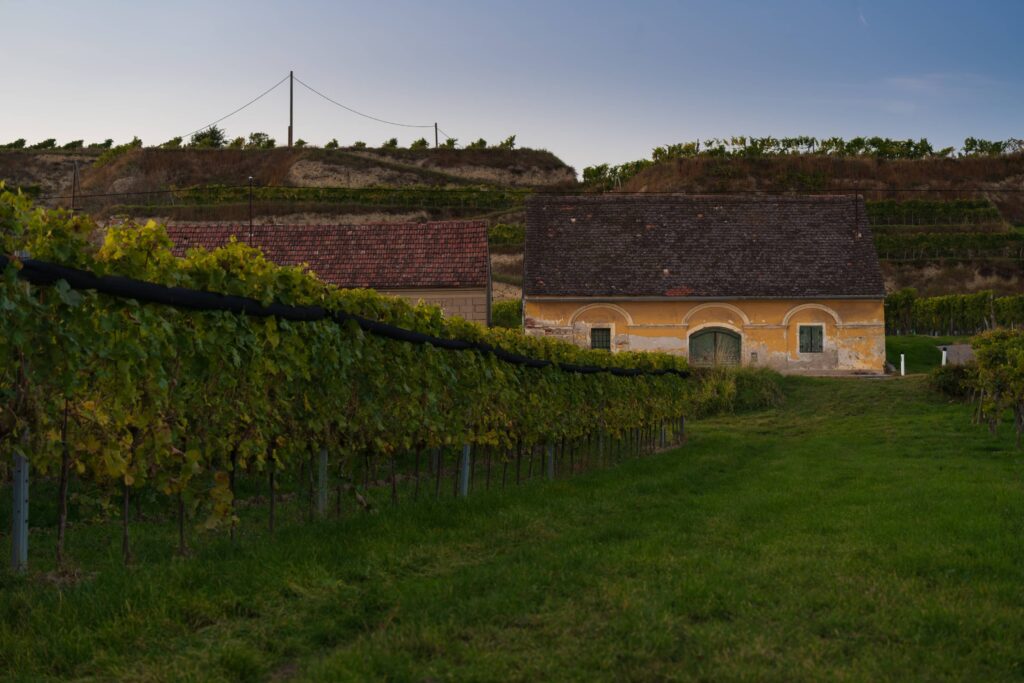
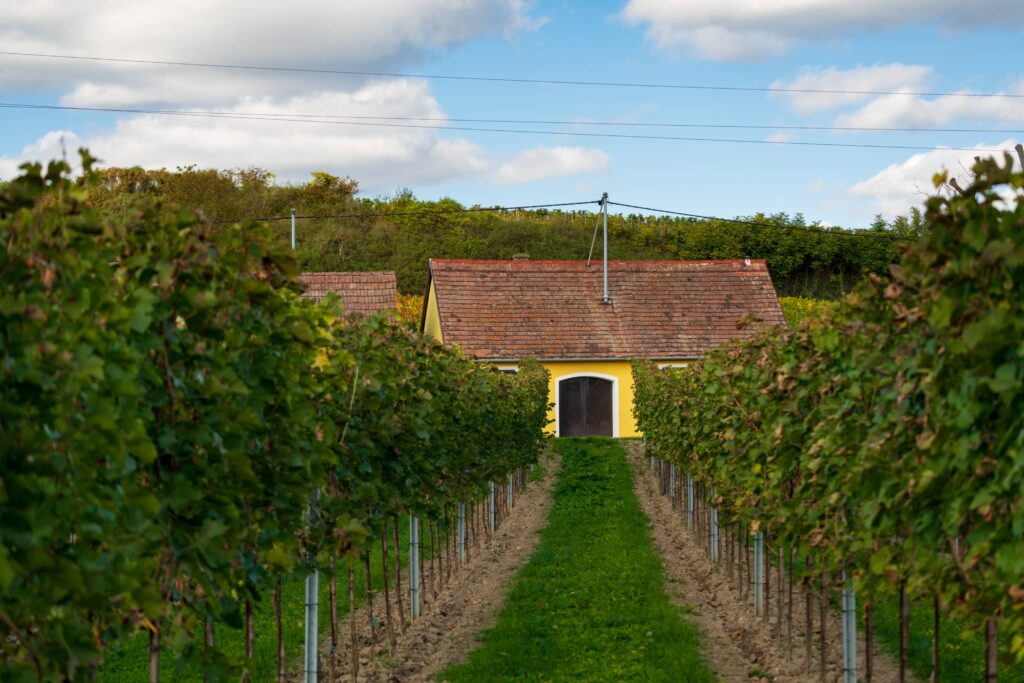
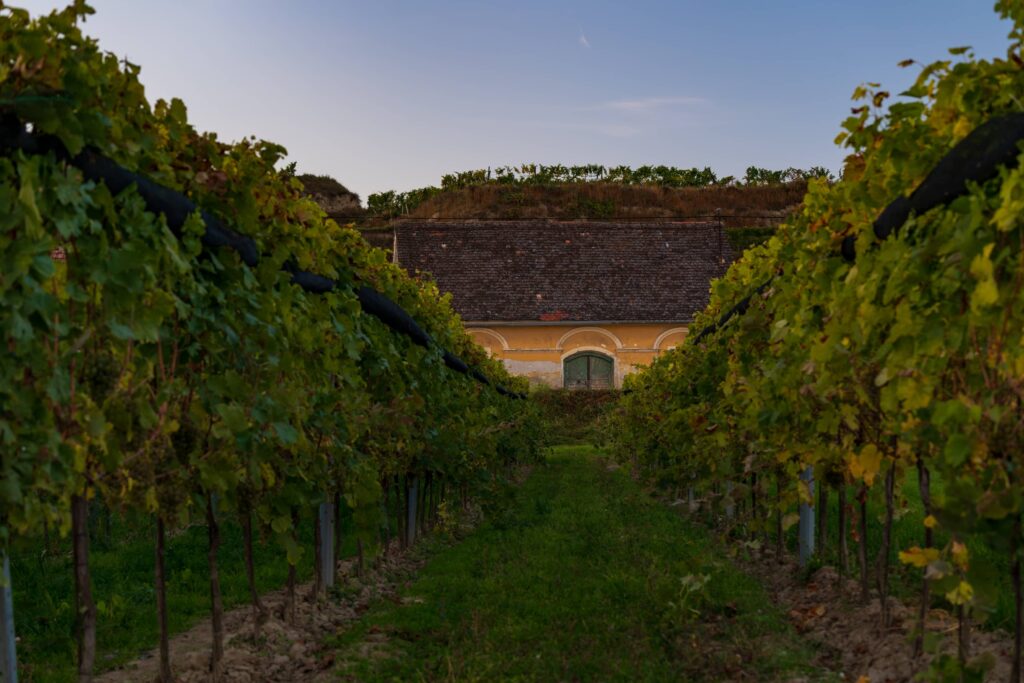
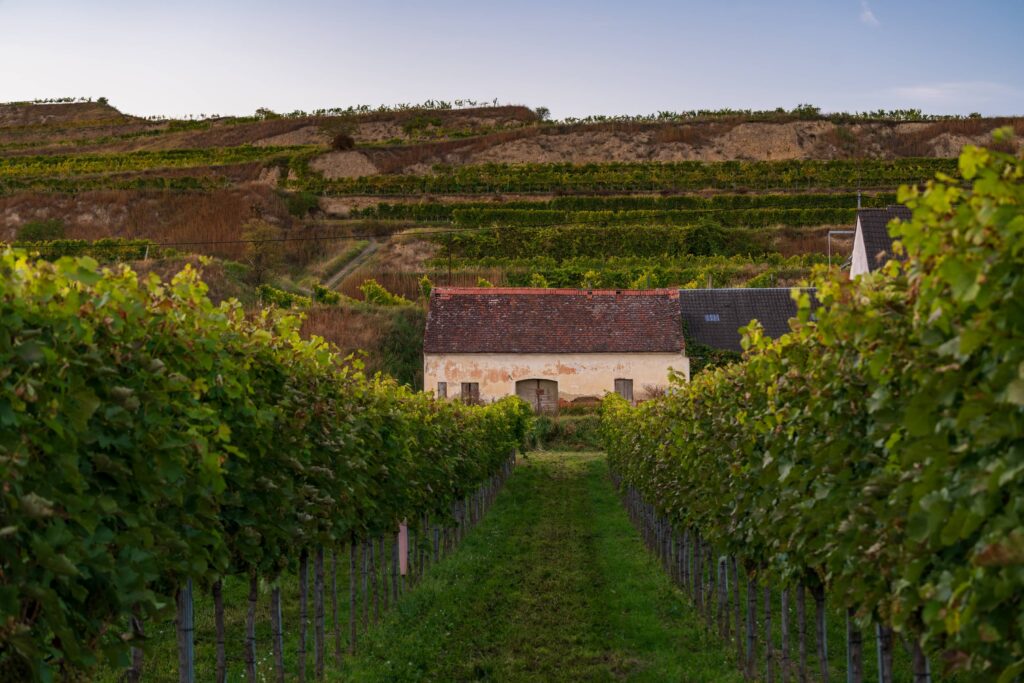
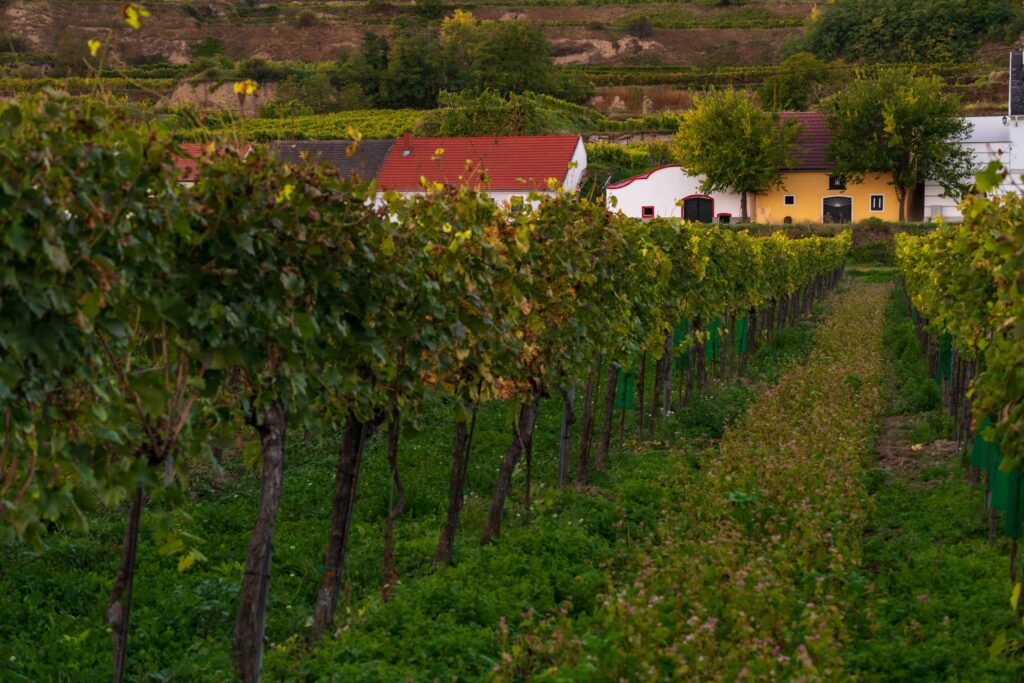
More exceptionally cute buildings
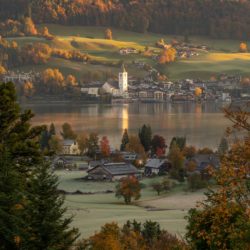
14 Gorgeous Churches in the Austrian Alps
Okay, maybe not exclusively in the Alps. 😅 We’re sharing our personal collection of beautiful churches in Austria with you! Some are fancy and famous and some are small gems nestled away in the countryside, but we love them all the same for their architecture and the sense of calm that comes with them. Let […]
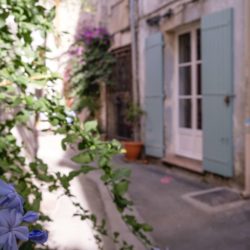
Wild and without an art education: Arles & van Gogh
Not exactly unhappy to leave the campsite in Manosque, we get up considerably early (for us anyway) and make our way to town to get a ride from there. Today we finally want to get to the seaside! (with a quick stop in Arles). I’m dreaming about sandy beaches and wild horses in the Camargue. […]
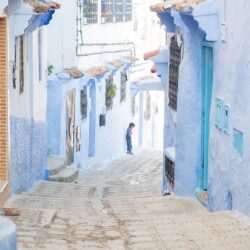
Chefchaouen: The Pearl of Morocco
Welcome to Chefchaouen, one of the, if not the, most mesmerising cities we’ve ever visited. A city high in the Riff mountains of Morocco with a winding Medina where every house is painted a shade of blue. It sounds kitschy but the result is a piece of paradise, a sort of heaven on earth. Truthfully, […]
5. Feuersbrunn Kellergasse
Close to Wora Kellergasse mentioned above, Feuersbrunn and its surroundings are lovely. There are many crisscrossing streets with lots of wine houses to explore. At the very top there is a viewing tower with fantastic views tono the Danube and further over a sea of vineyards.
To get there, take the same REX 4 from Spittelau or Franz-Josefs-Bahnhof to Wagram-Grafenegg, the next stop on from the Wora Kellergasse destination (Fels am Wagram). It’s a bit of a walk so maybe a bike is a better option, especially if you want to explore more. We enjoyed a picnic in the vineyards and watched the sunset from the viewing tower before cycling back to the train station in the full moon light. A perfect way to spend a Sunday in our opinion!
To extend your trip, head over to Aussichtswarte Fels am Wagram, where there a bunch of winding Kellergassen with some gorgeous, almost medieval buildings, some decrepit and covered in vines, half taken back by nature.
- Highlight: The Aussichtswarte Engabrunn and the closeby Aussichtswarte Fels am Wagram give you beautiful views over the wine hills
- Address: 3483 Feuersbrunn. There are multiple other Kellergassen that surround this one, great opportunity for a long walk!
- How to get there: Hop on a train from Franz-Josefs-Bahnhof to Wagram am Wagram and prepare yourself to walk for an hour to the Kellergasse.
- Walking: https://www.niederoesterreich.at/a-feuersbrunner-riedenpanoramaweg
- Biking: https://www.bergfex.at/sommer/niederoesterreich/touren/mountainbike/59367,kellergassen-tour/
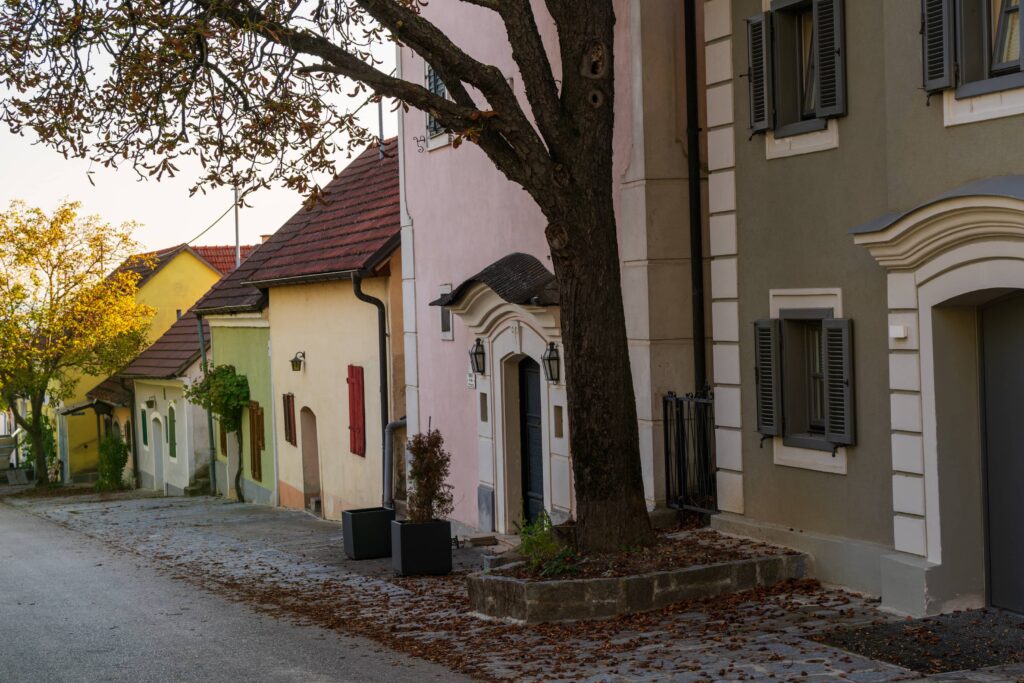
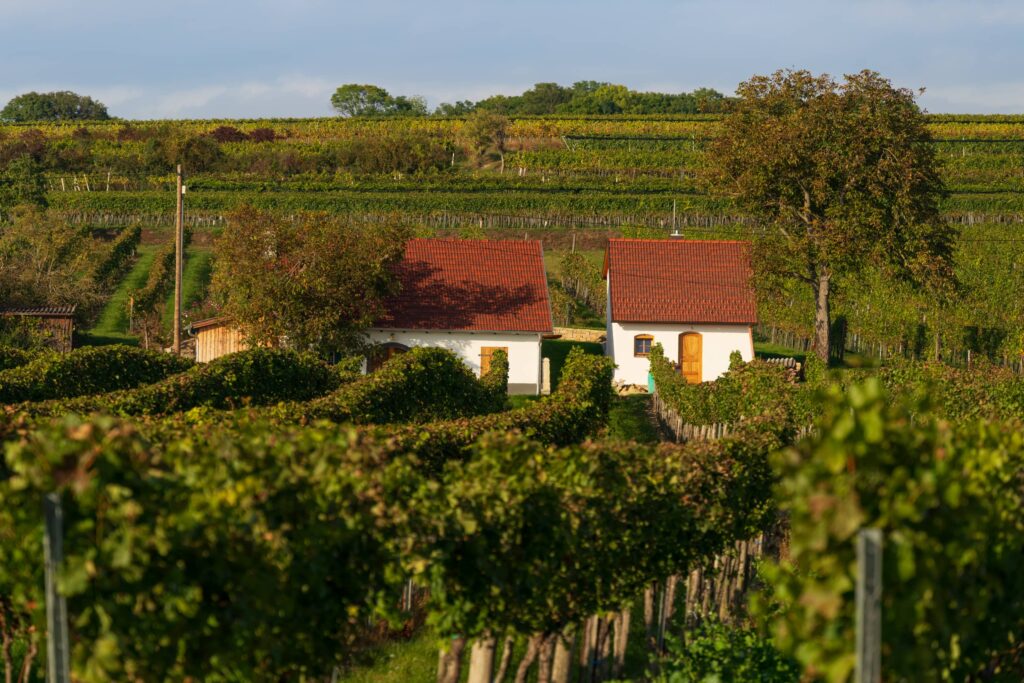
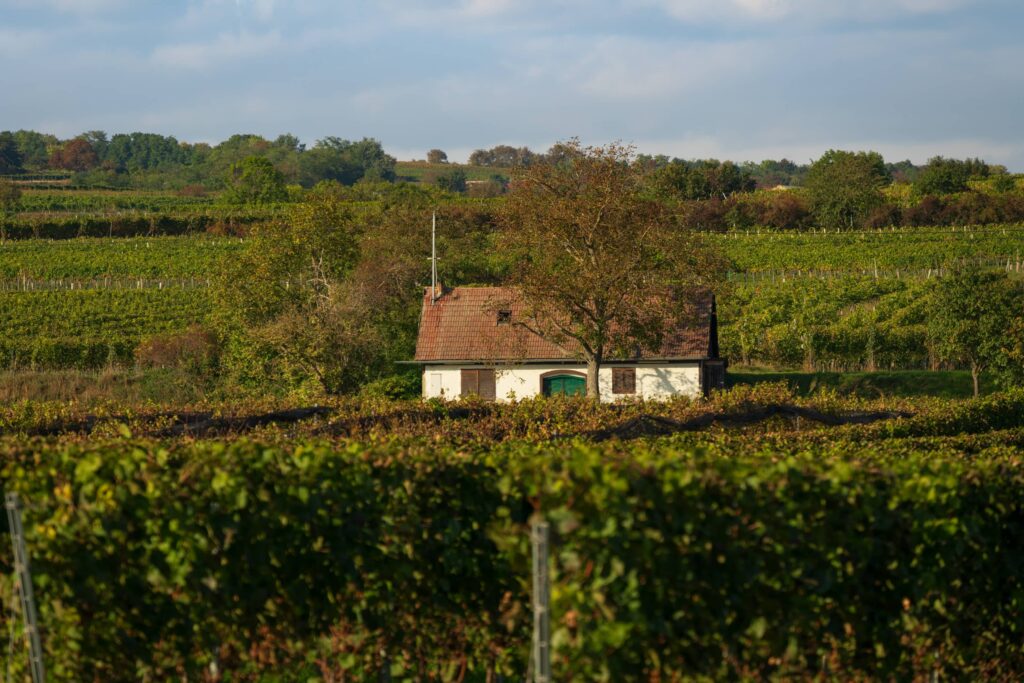
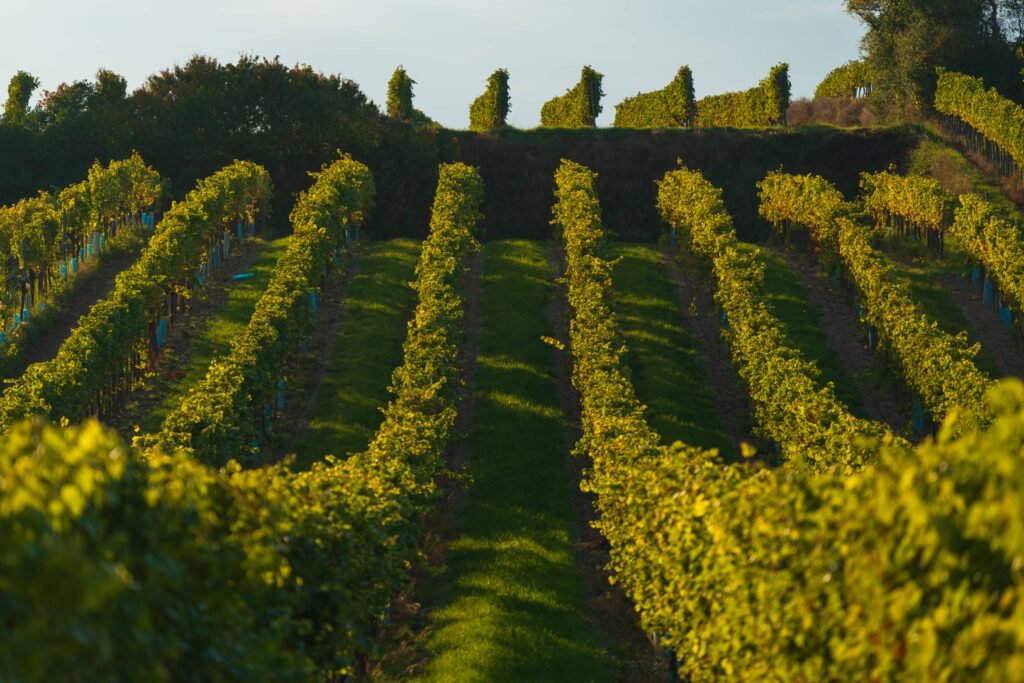
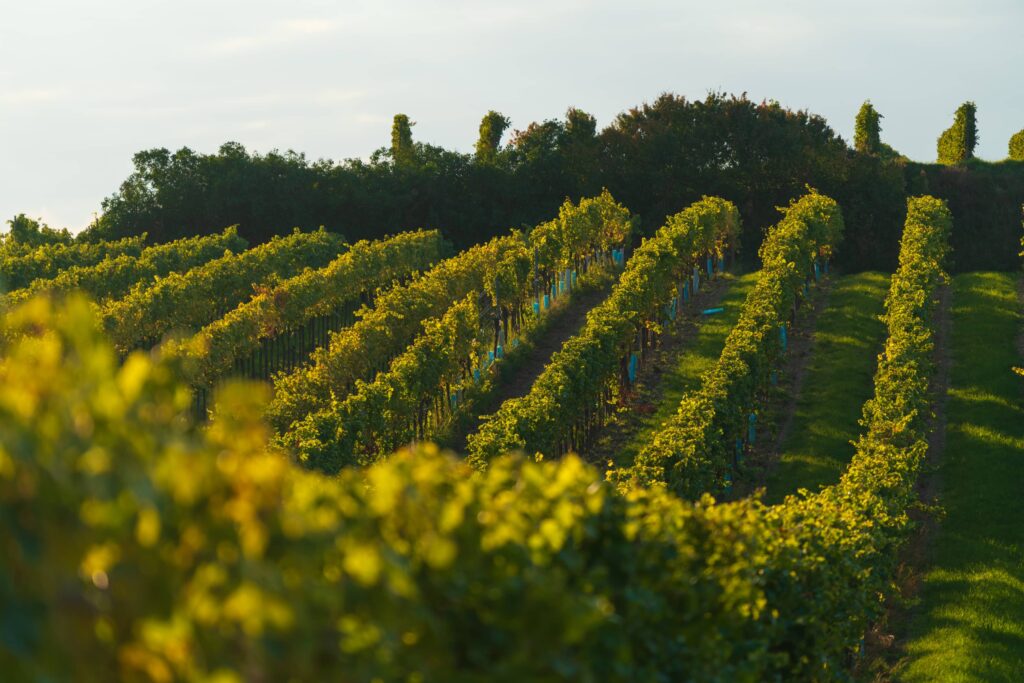
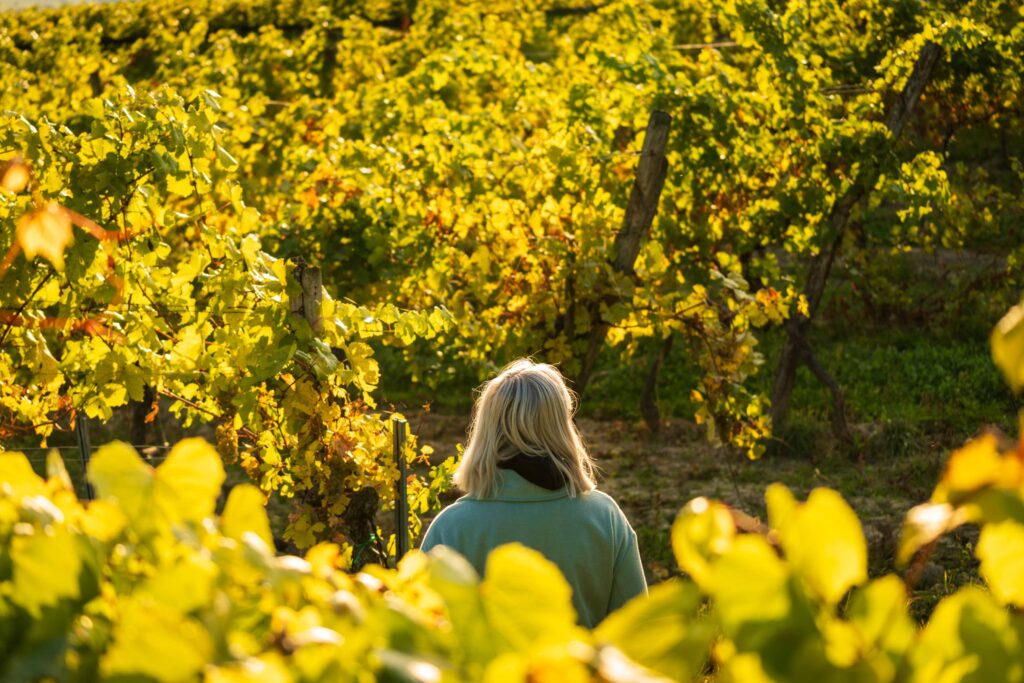
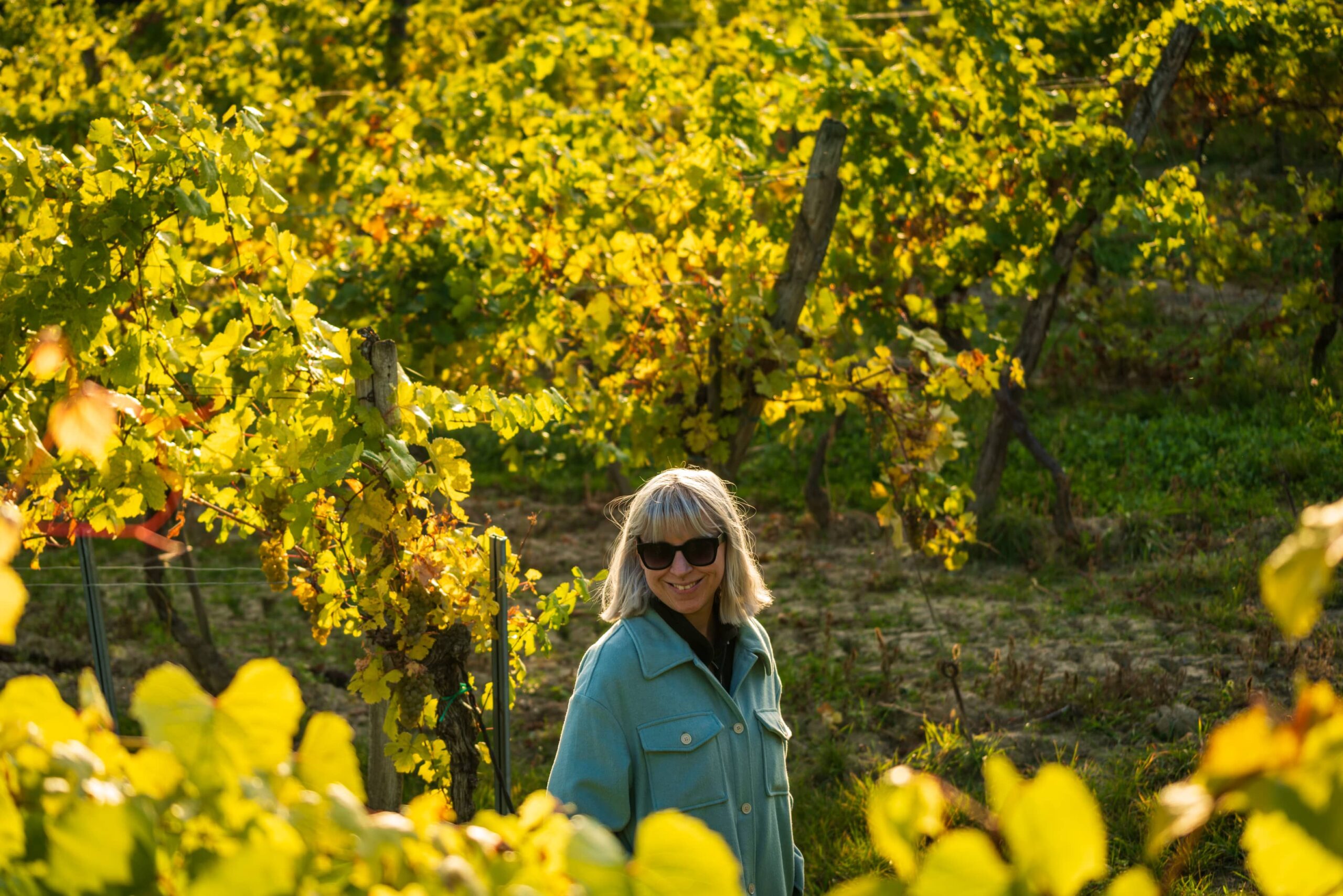
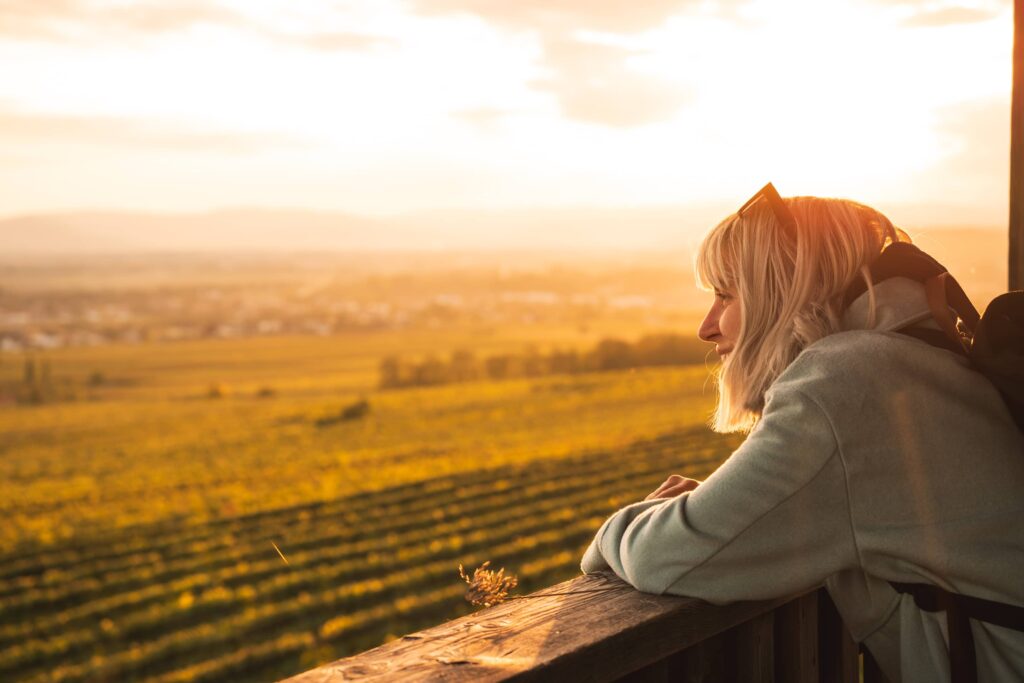
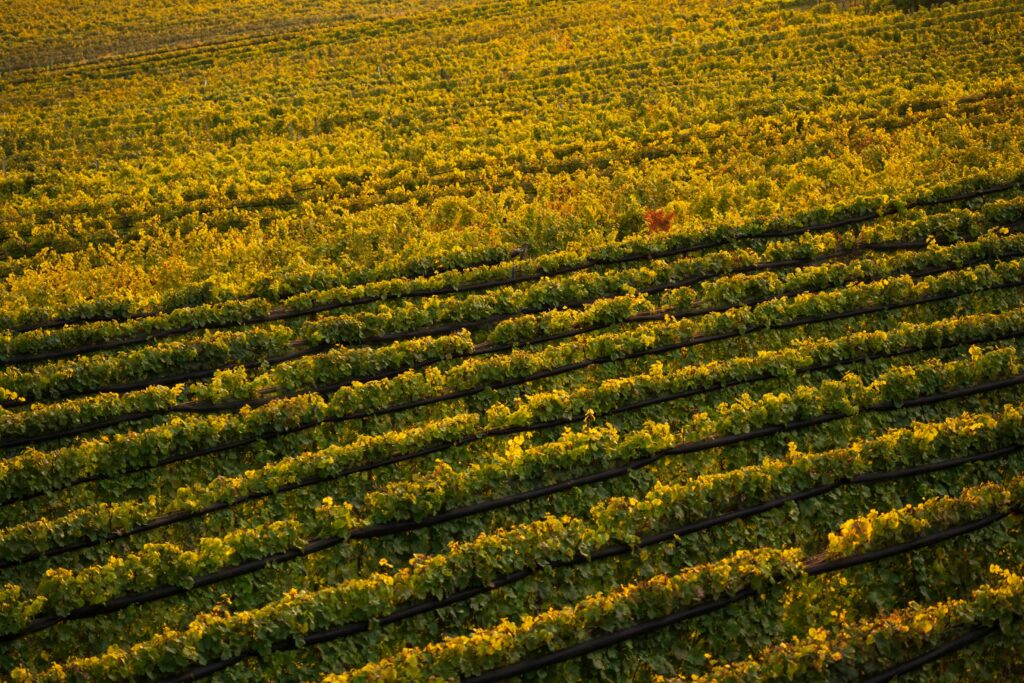
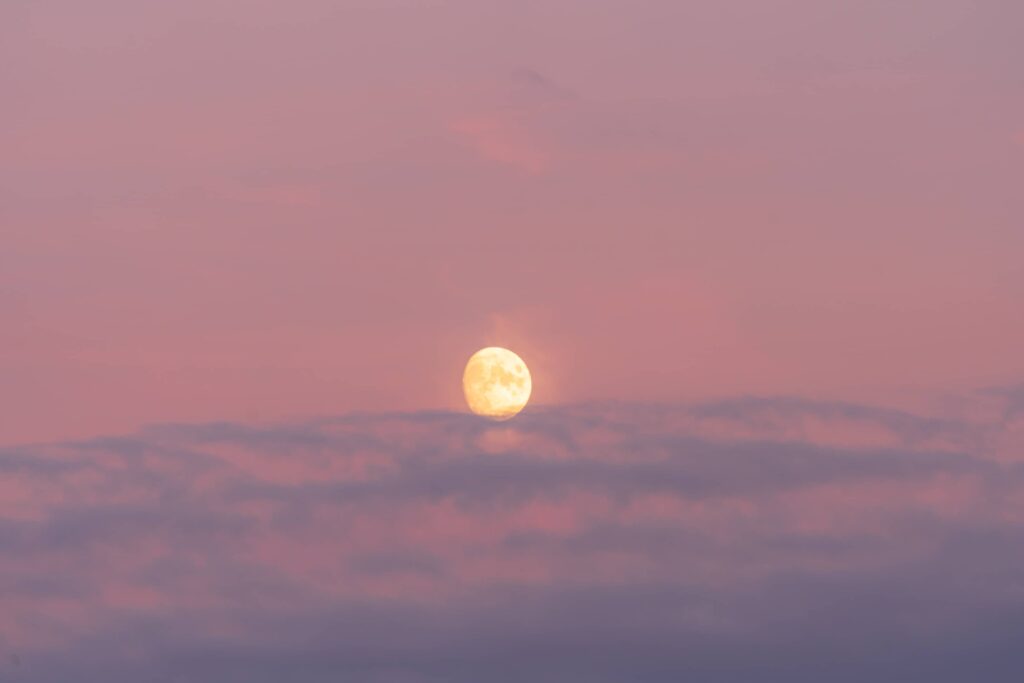
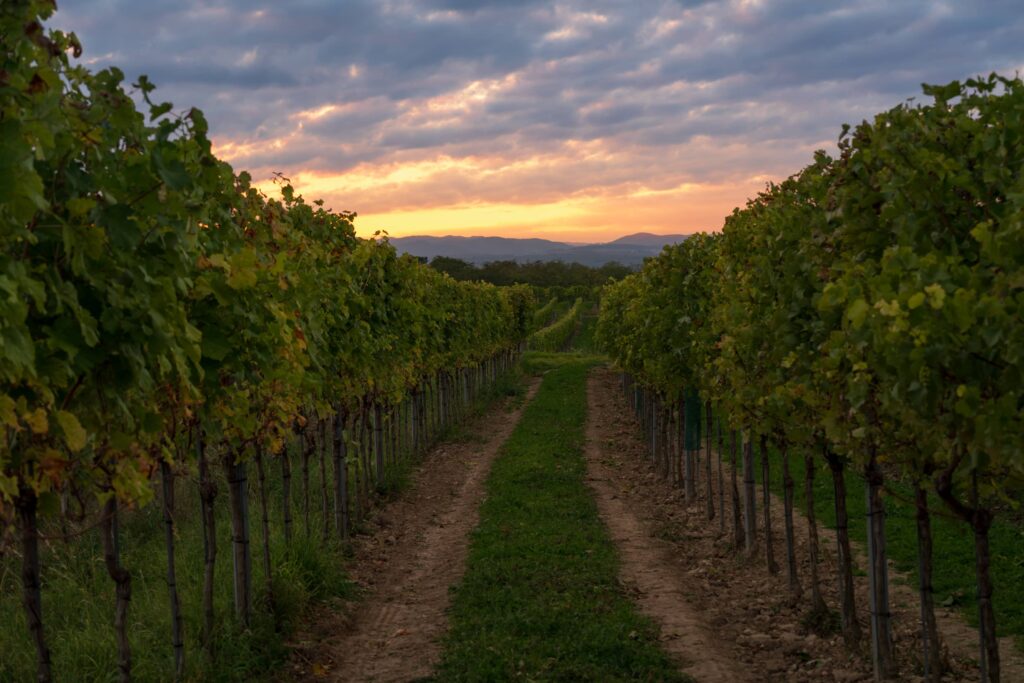
6. Loamgrui Unterstinkenbrunn
So, for those well versed in German you might have already had a little giggle, but for those not so, let me explain: Unterstinkenbrunn, which is the name of the village hosting this adorably cute Christmas market, directly translates to Lower Stinking Well. What a name, huh? They must be really proud of it. Even Caroline can’t contain herself at the name and bursts it to fits of giggles every time she sees it. And let me assure you, Austria has some incredible names for English speakers that seem completely lost on the locals here. A few examples include Wankham, Assling, Windpassing, Tuffbad, Going, Hardegg, and of course there is the infamous Fucking, now renamed Fugging. Anyway, I digress.
We found this little place by accident while cycling a loop from Laa an der Thaya. It passed through Unterstinkenbrunn and we noticed the largest collection of cars and people we’ve ever seen in the Austrian countryside, despite never having heard about this town before. So, Unterstinkenbrunn hosts a Adventmarkt (Christmas market) every year in their Kellergasse. But it’s not a typical Kellergasse, it’s a whole village of wine cellar houses connected by dug out paths. It’s a little elf village, where you buy Christmas gifts, little snacks and Glühwein from a cauldron. Yes you heard that correctly, see below for proof. There is also live music, there was a brass band when we were visiting. Check here for the dates closer to the time.
Each wine cellar (almost all 60) is kitted out with a particular theme: jewellery, food, drinks, artisanal gifts, ceramics, candles etc.
It’s not so easy to get to and most likely that is the reason most people drive. Take the REX 2 train from Floridsdorf to Laa/Thaya and then you can either cycle or take a bus (listed below). Cycling takes about an hour and it’s quite pretty with lots to see. We saw lots of deer and rabbits frolicking in the fields.
- Highlight: Its yearly advent market with live music (a firm favourite of ours!)
- Address: Loamgrui
- How to get there: Train from Floridsdorf to Laa/Thaya, then change to bus 591 (direction Stronsdorf Hauptplatz). Get off at Unterstinkenbrunn Stronsdorfer Straße and walk about 15 minutes to the Kellergasse. There is also the possibility to take bus 588 to the graveyard, this one takes longer though.
- Walking: https://www.weinbergwandern.at/region/weinviertel/der-tut-gut-schritteweg-gesundes-unterstinkenbrunn/
- Biking: https://www.niederoesterreich.at/a-vom-schlossgeist-zum-himbeergeist
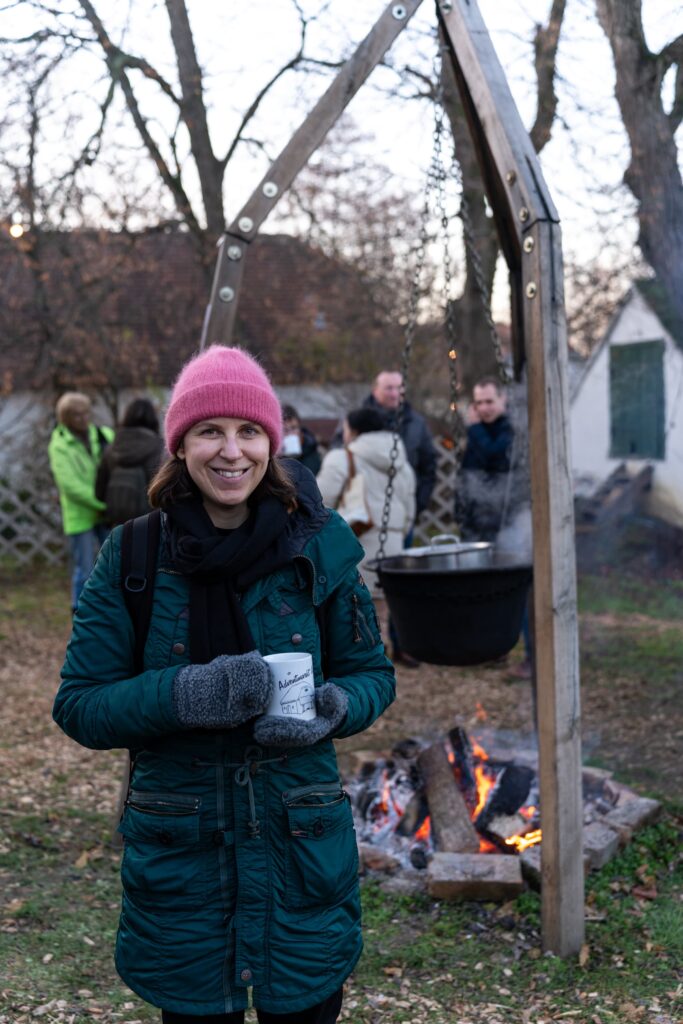
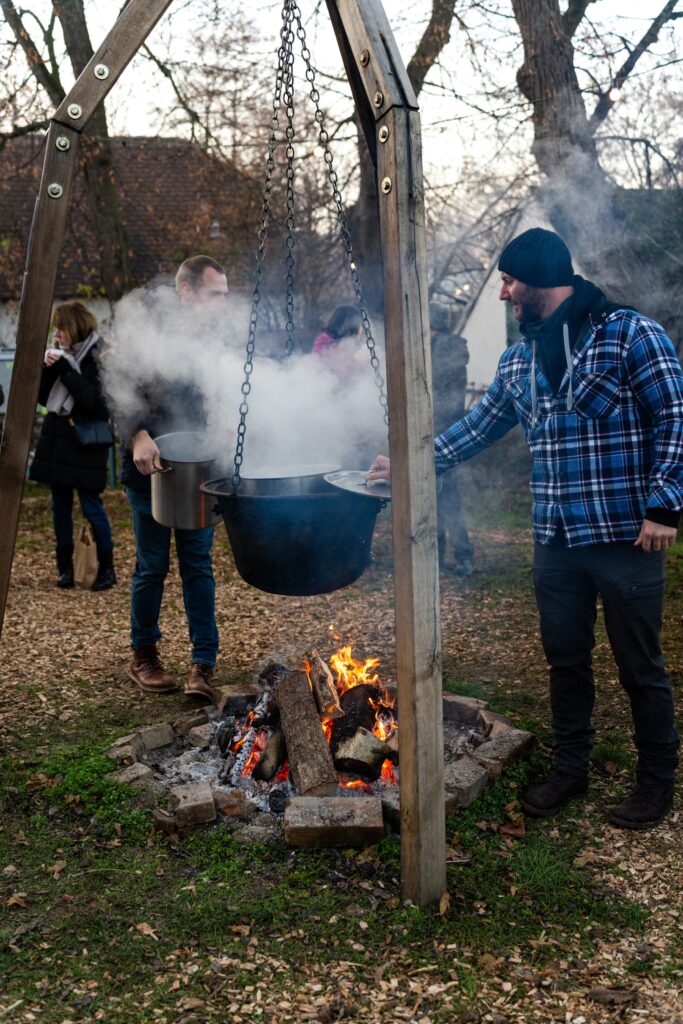
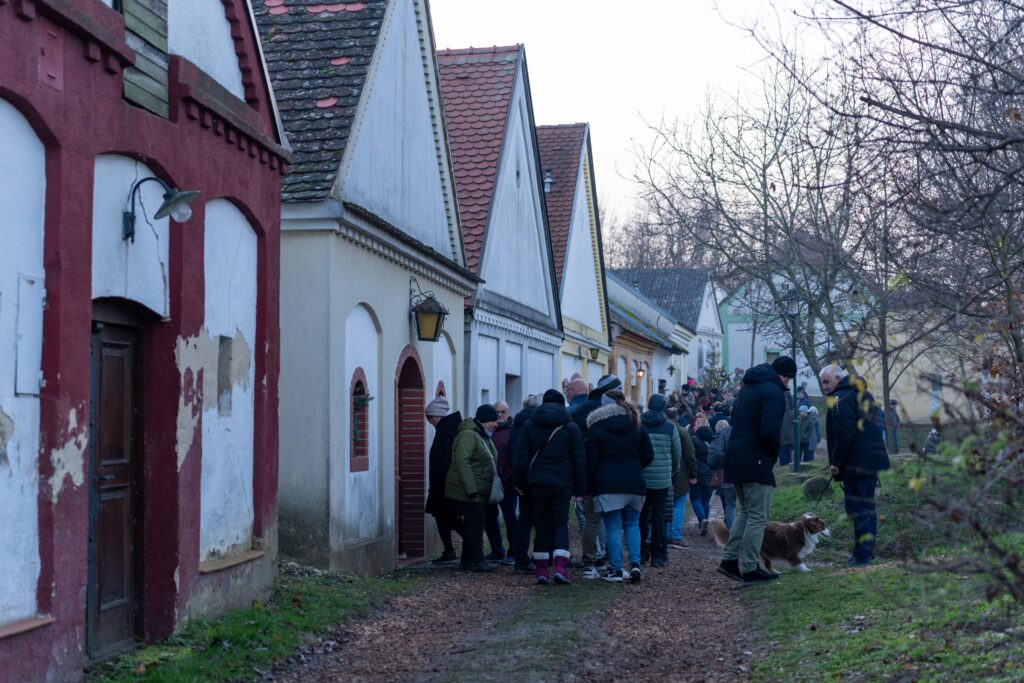
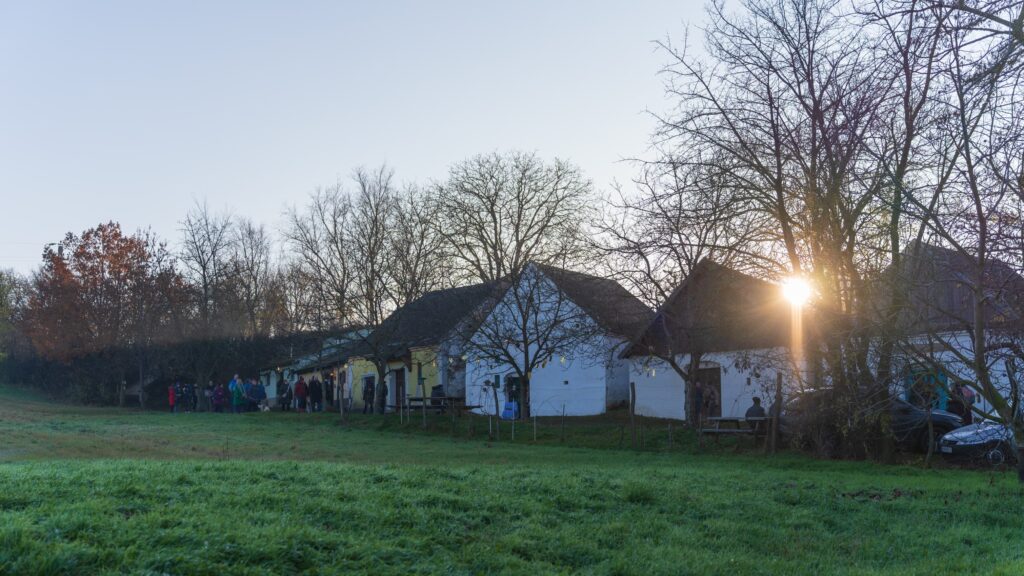
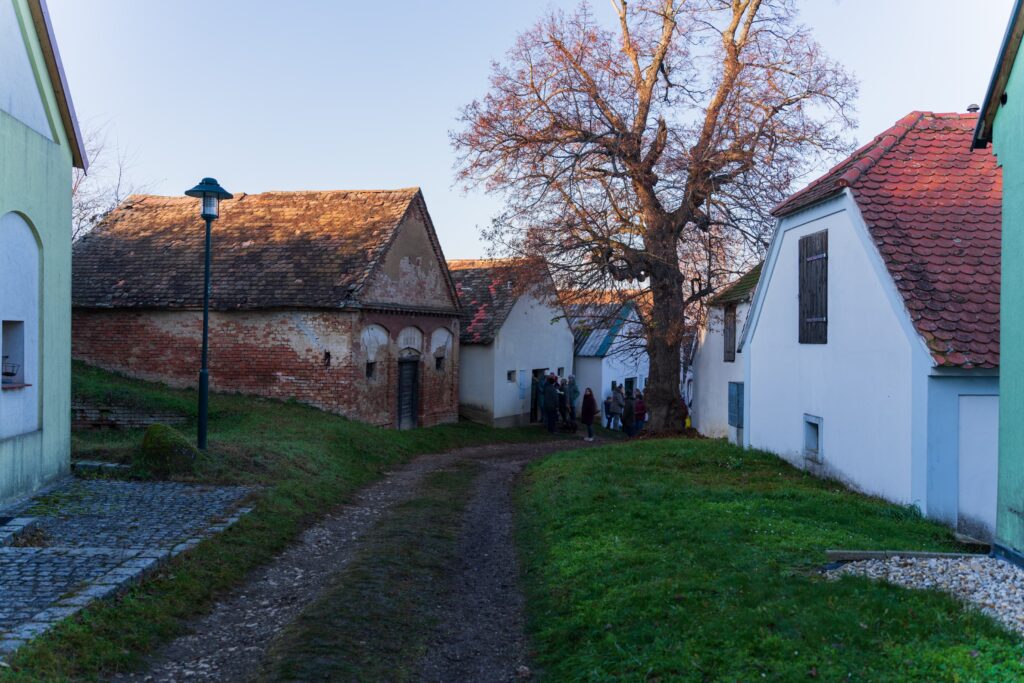
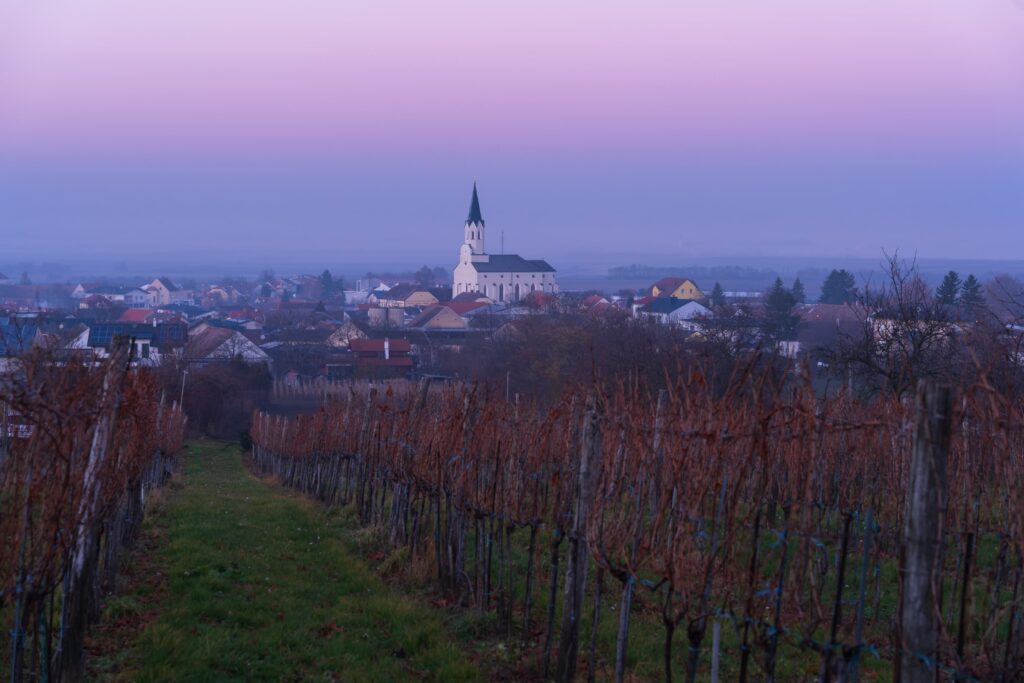
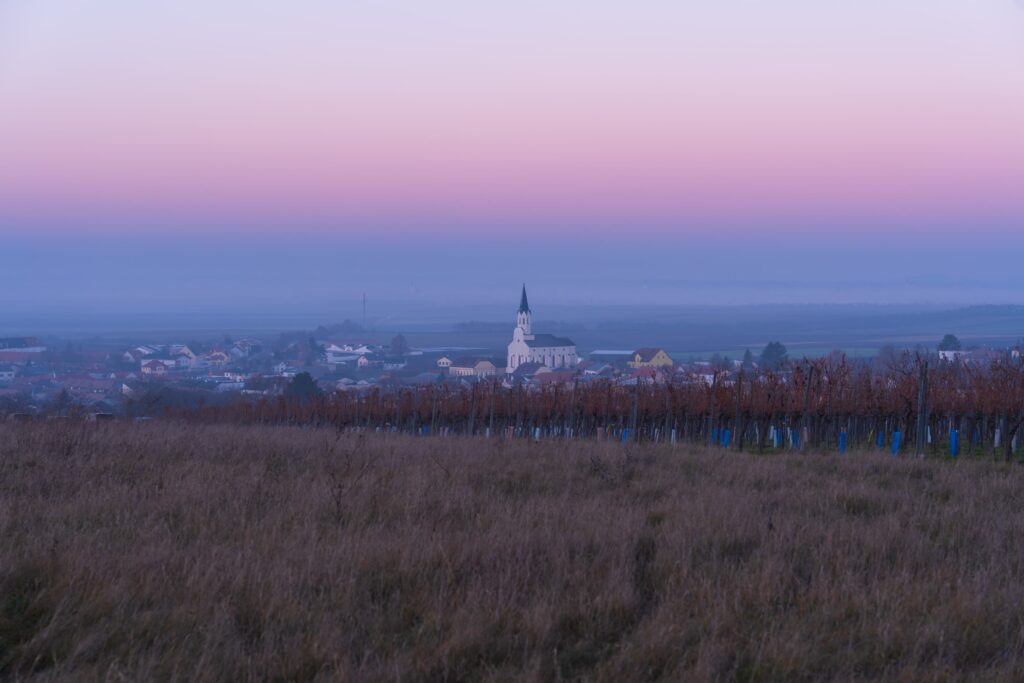
7. Kellergasse Haugsdorf – Große Kellertrift
The next few Kellergassen we visited all on the same day, on a quite long bike ride: a loop from Retz, visiting the border to Czechia through many Kellergassen and lots of really pretty little villages and many nice view points. You could easily spend a day or afternoon at any of the below destinations. Most likely it will depend on whether you want to walk, cycle, use public transport, etc. Check the details below for travel tips.
If you visit Retz there are many things to see: Retz main square is really pretty with some unusual medieval buildings and a church tower in the middle of the main square with an exquisite view which you can climb for a small fee. On the outskirts of Retz on a hill is one of the last 2 remaining functioning windmills in Austria. It’s a truly idyllic spot with views of endless rolling hills and vineyards. Along the way are many pretty villages including Unterretzbach, Jetzelsdorf with its wine church, Peigarten, Zellerndorf, Dietmannsdorf and Schrattenthal with its castle estate.
In our opinion Große Kellertrift has some of the most spectacular wine houses with many beautiful and unique facades. There is even a self service wine station where you can take a rest on some benches, enjoy the view and drink some local wine, whatever the season.
- Highlight: Filming location of the Austrian crime show Polt
- Address: Just outside of Jetzelsdorf
- How to get there: This one is tricky to get to on the weekend. The closest train station is Zellerndorf, from there you’d walk 2:50 hrs to the Kellergasse. We recommend to take the REX 3 train from Wien HBF to Retz and combine the visit to Haugsdorf with a bike tour.
- Biking: https://www.niederoesterreich.at/a-weinviertler-kellergassen-radrunde
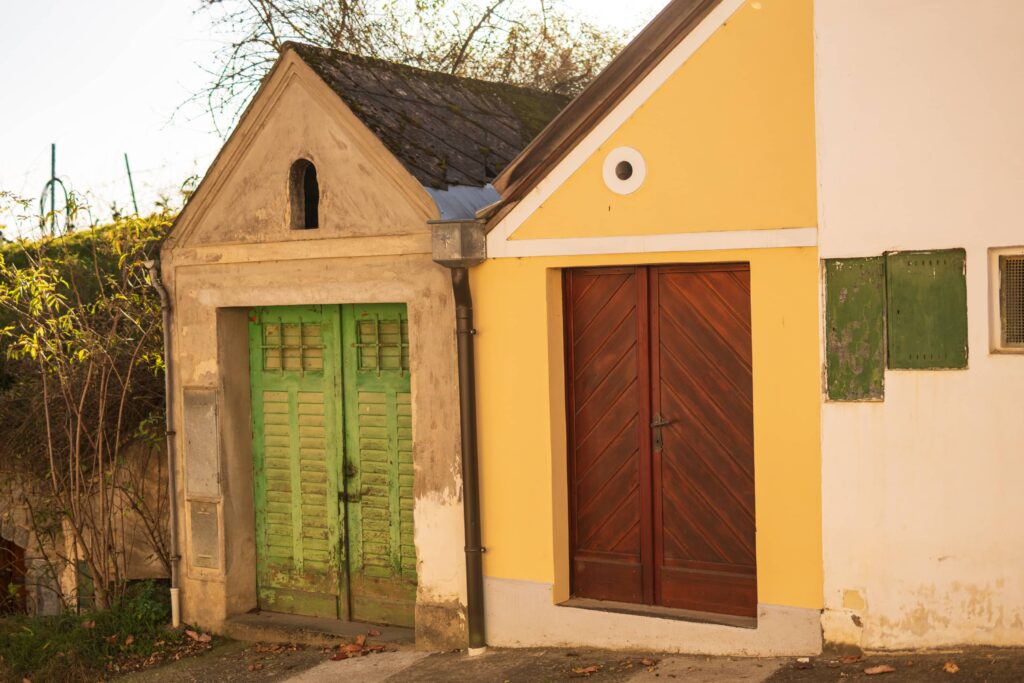
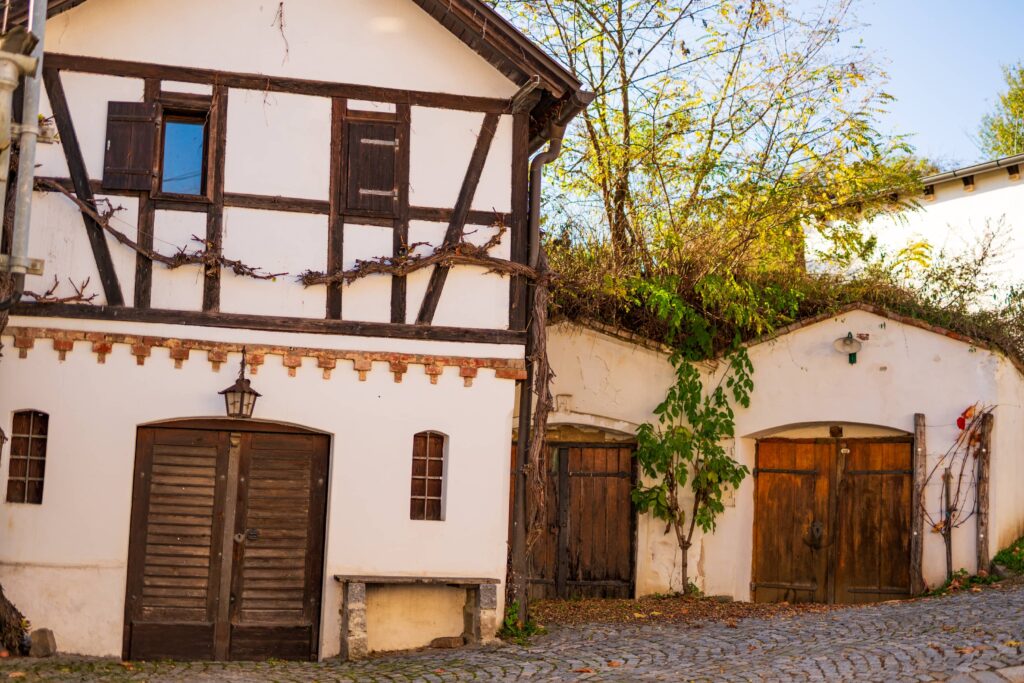
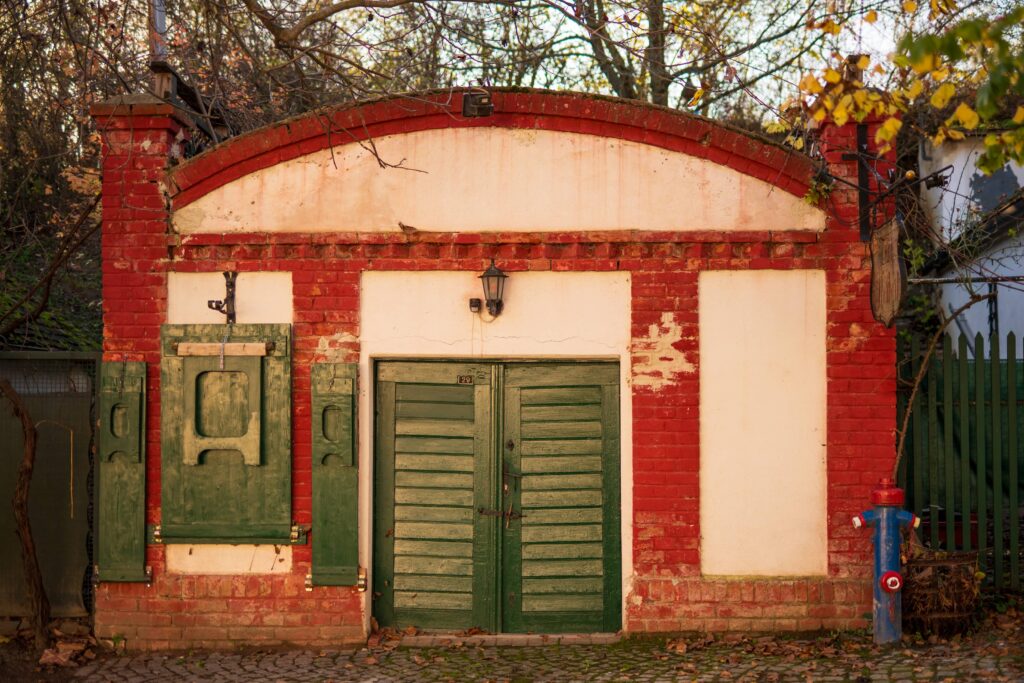
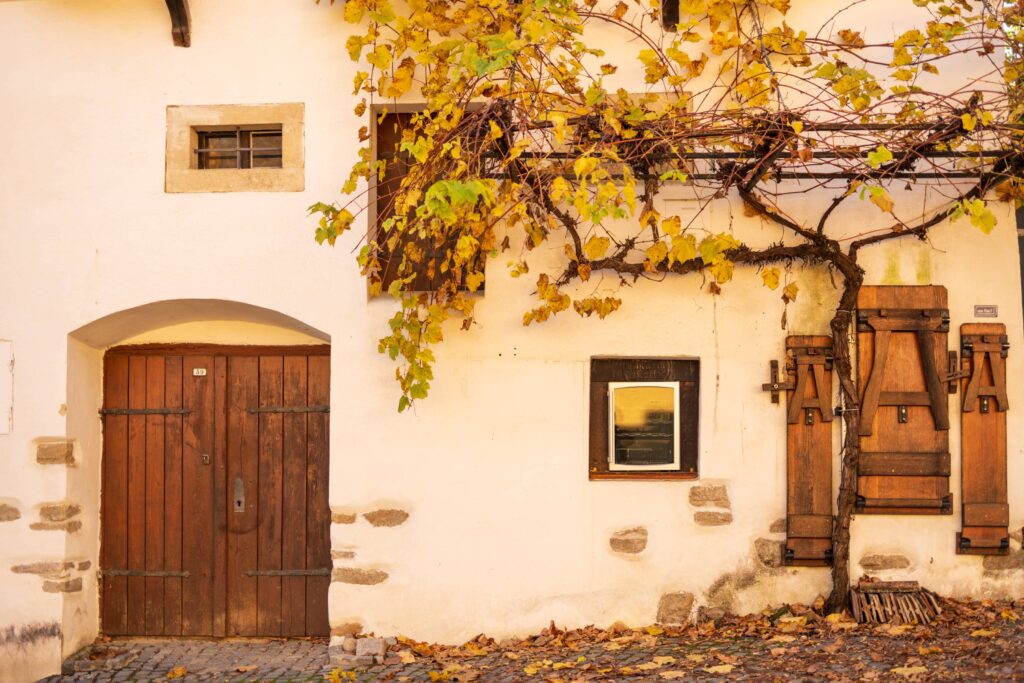
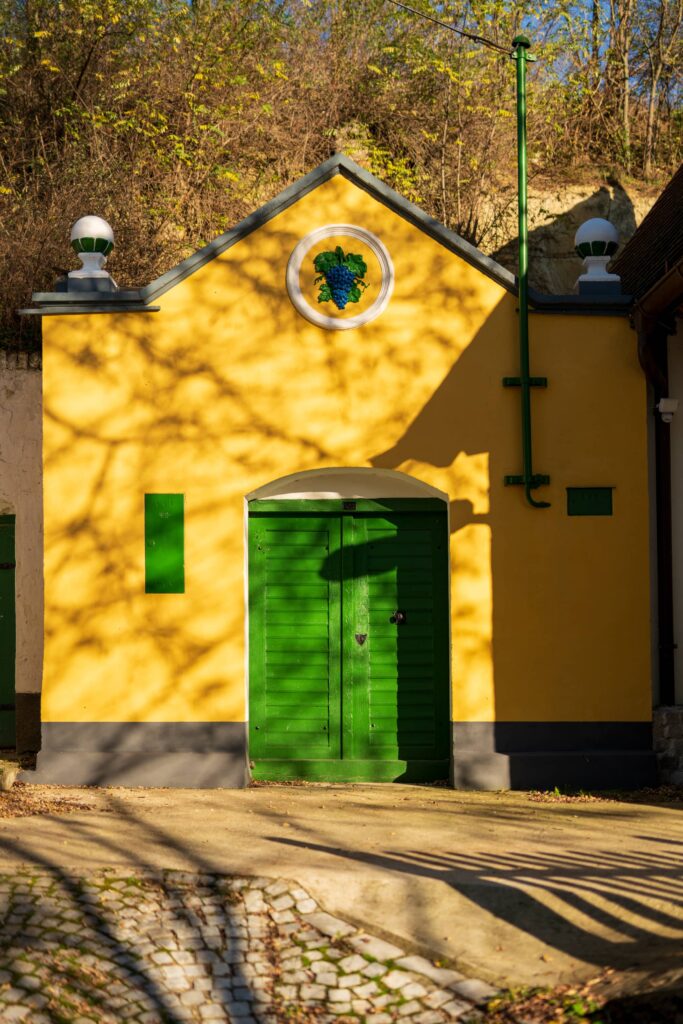
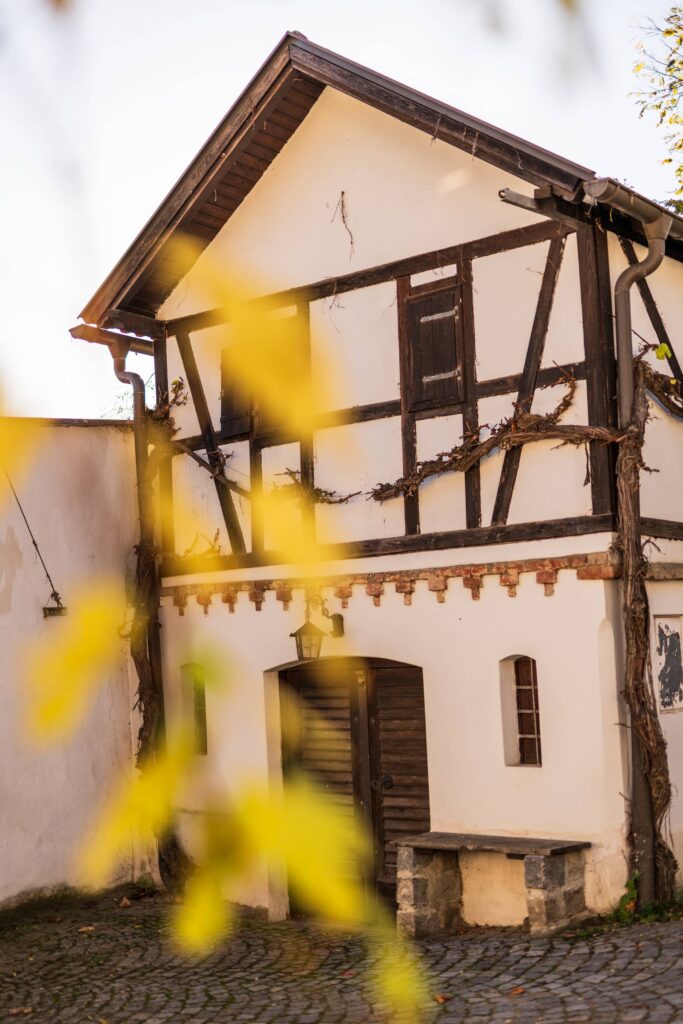
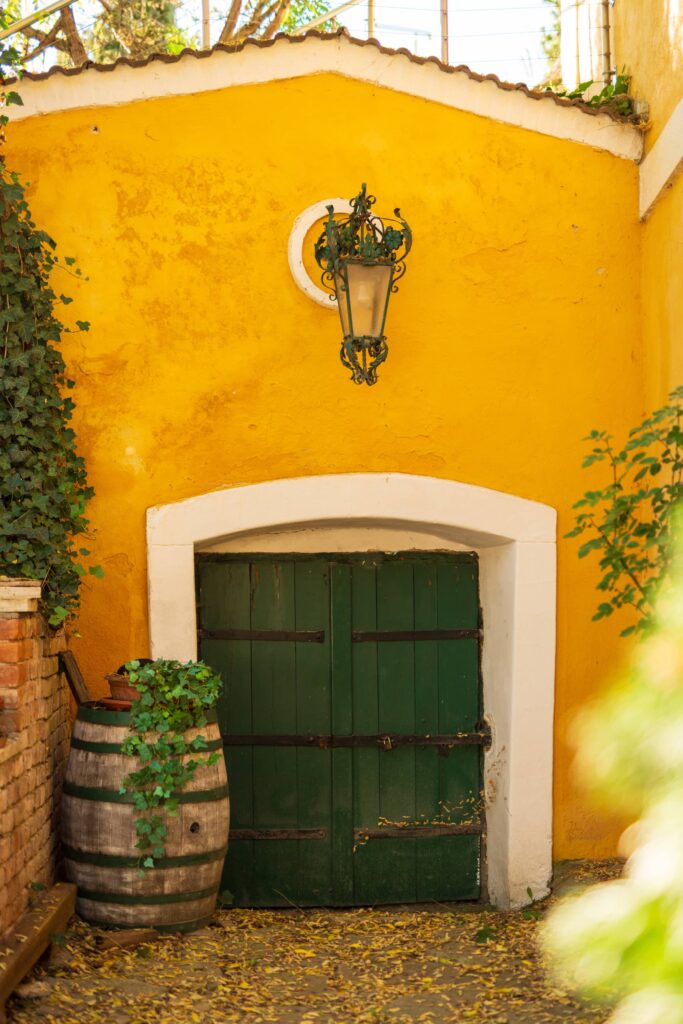
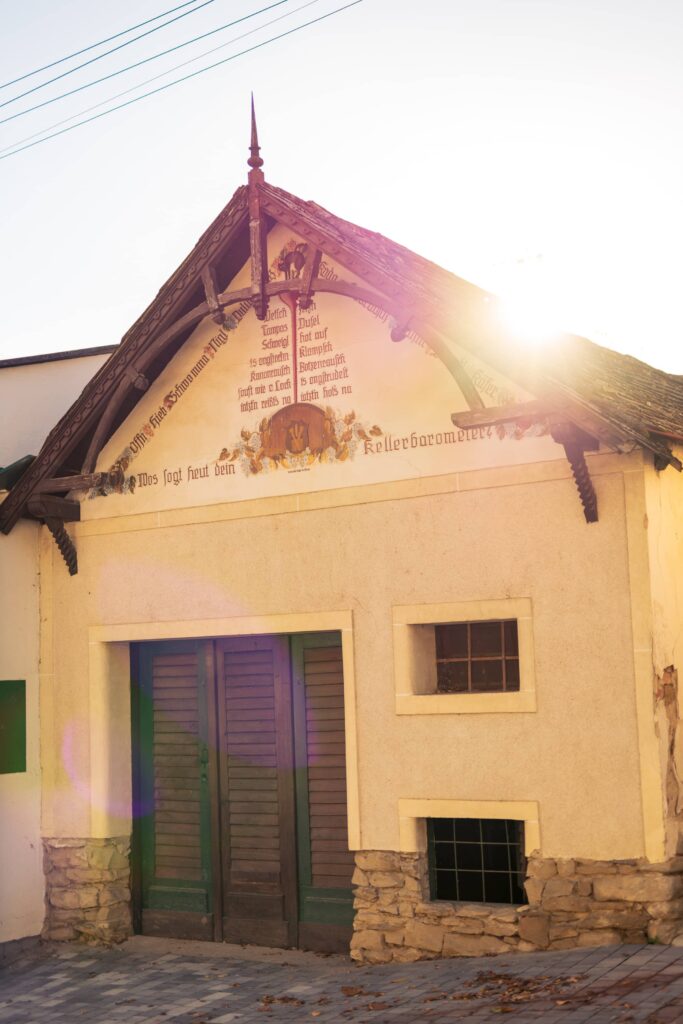
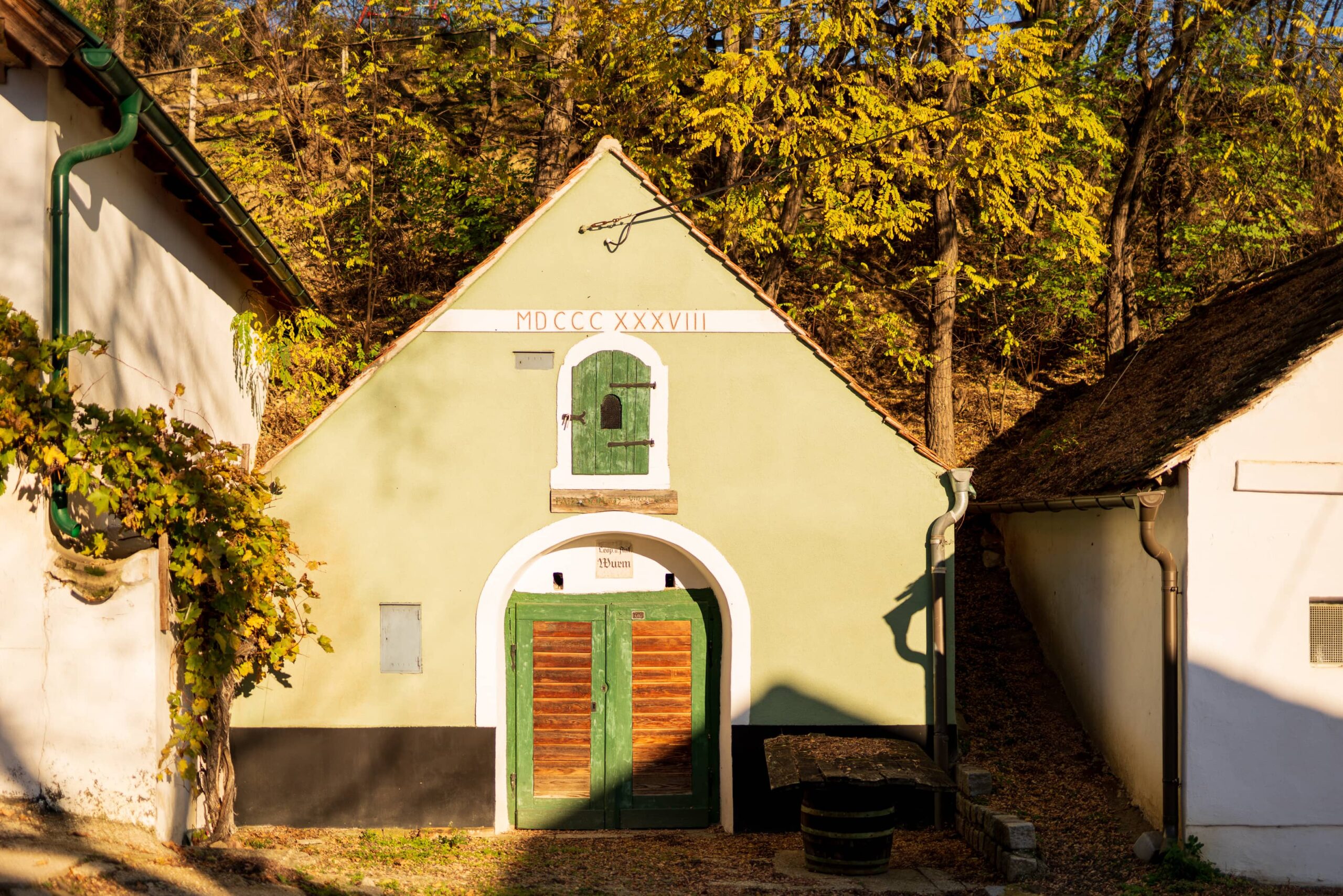
8. Peigarten Kellergasse
Peigarten is a cute small Kellergasse just on the outskirts of the main village. It is almost completely covered in the forest with a little circular gathering in the middle. At the end stands an old romantic church. It’s probably not worth the effort to travel directly here, but on the cycling route described above for Große Kellertrift from Retz it’s a nice stop for a snack and a little explore. In the summer it’s probably great for a break from the relentless heat.
- Highlight: The buildings are arranged in a semi-circle – you can plow yourself down in the middle of Perigriniplatzl and chill surrounded by nice buildings
- Address: 2053 Peigarten
- How to get there: Equally tricky as Haugsdorf above. Visit this one while on the Weinviertler Kellergassen Radrunde too! The Kellergasse is located here.
- Biking: https://www.niederoesterreich.at/a-weinviertler-kellergassen-radrunde
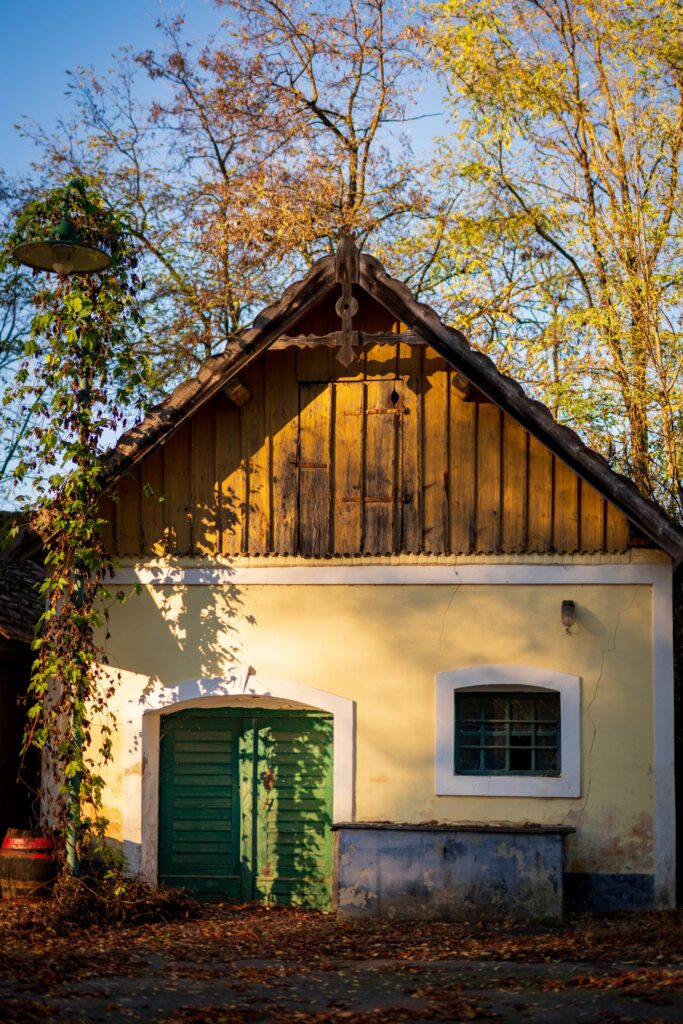
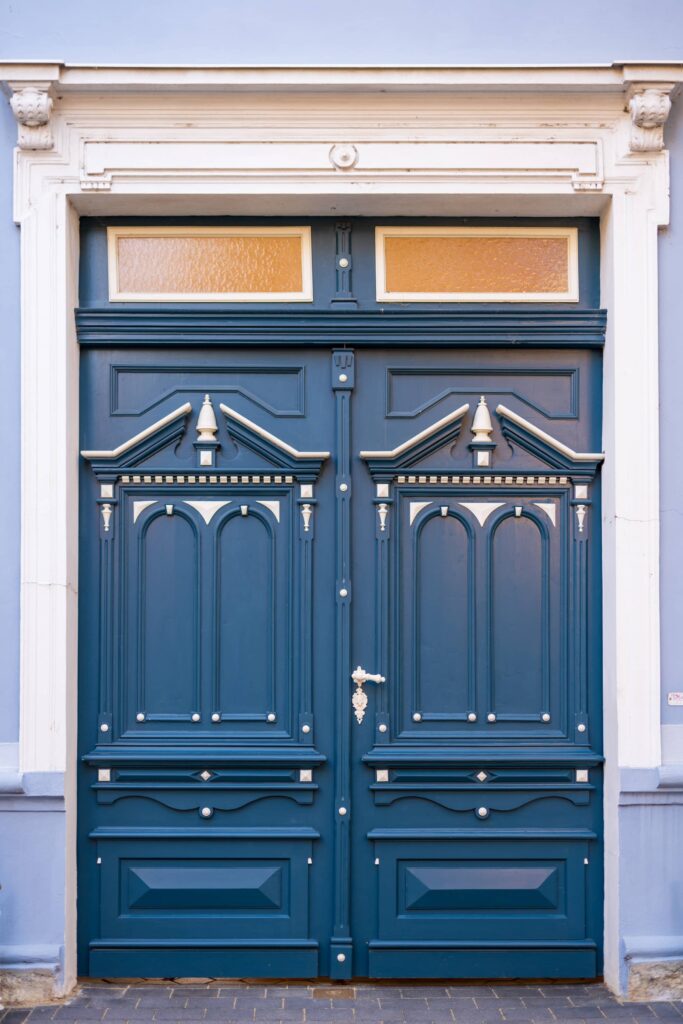
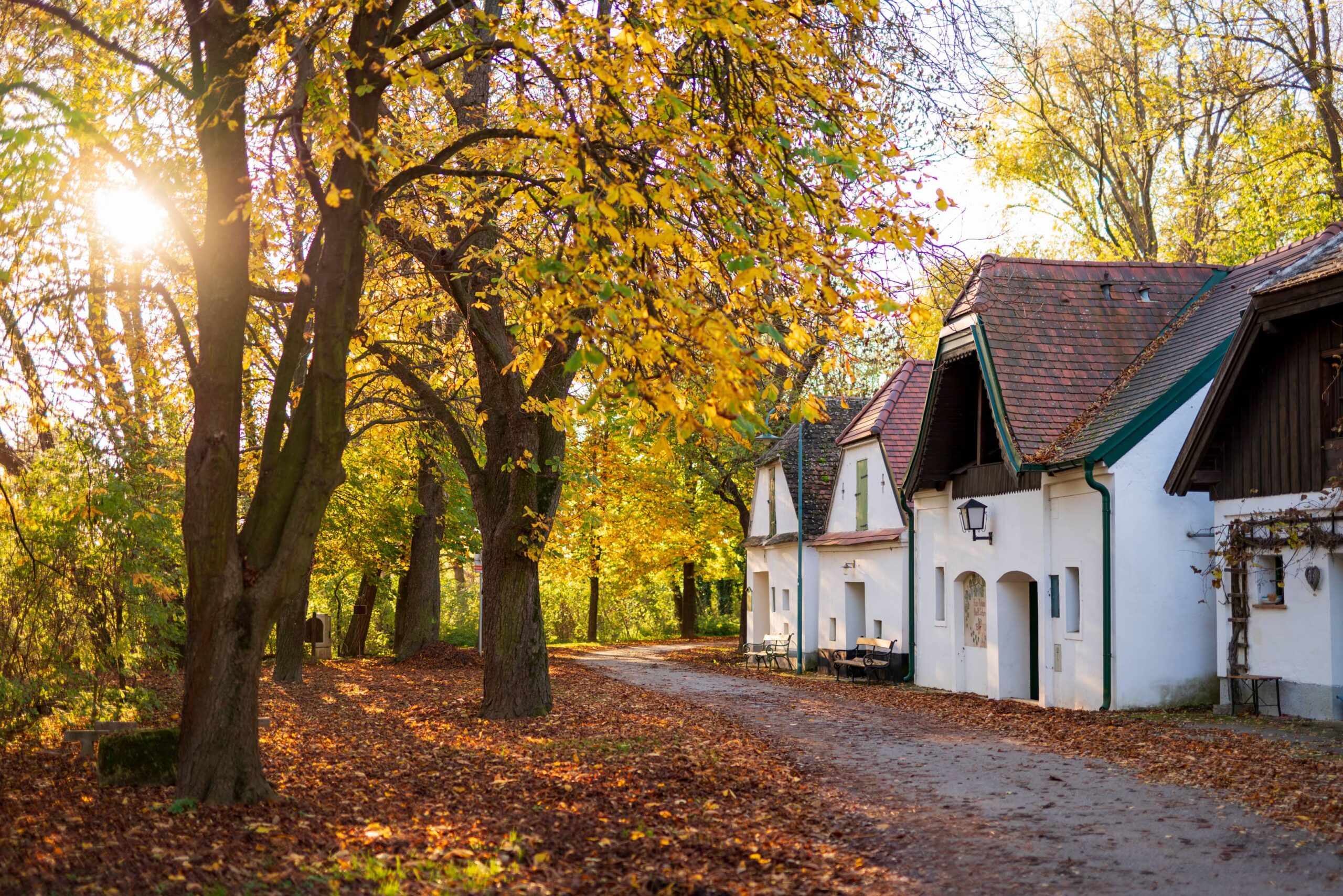
9. Kellergasse Maulavern
The last on the list, but one of the most romantic. The Kellergasse snakes up the hill from the outskirts of the main village of Zellerndorf, where you can find sweeping views over the soft rolling landscape. It’s particularly special during sundown, when the golden light smoothes the medieval whitewashed buildings. Honestly, it’s pure bliss. It’s hard to find something that warms the heart as much as this.
If you’re on your bike, it’s not even the last destination on the route – but it’s most certainly worth every ounce of your time.
- Highlight: Has a cellar museum where a film about the wine harvest from back in the days is shown
- Address: 2051 Zellerndorf
- How to get there: Easy – Train from Floridsdorf to Zellerndorf. This is a good start to visit the other two Kellergassen above if you take your bike!
- Walking: https://www.niederoesterreich.at/a-berg-und-tal
- Biking: https://www.niederoesterreich.at/a-weinviertler-kellergassen-radrunde
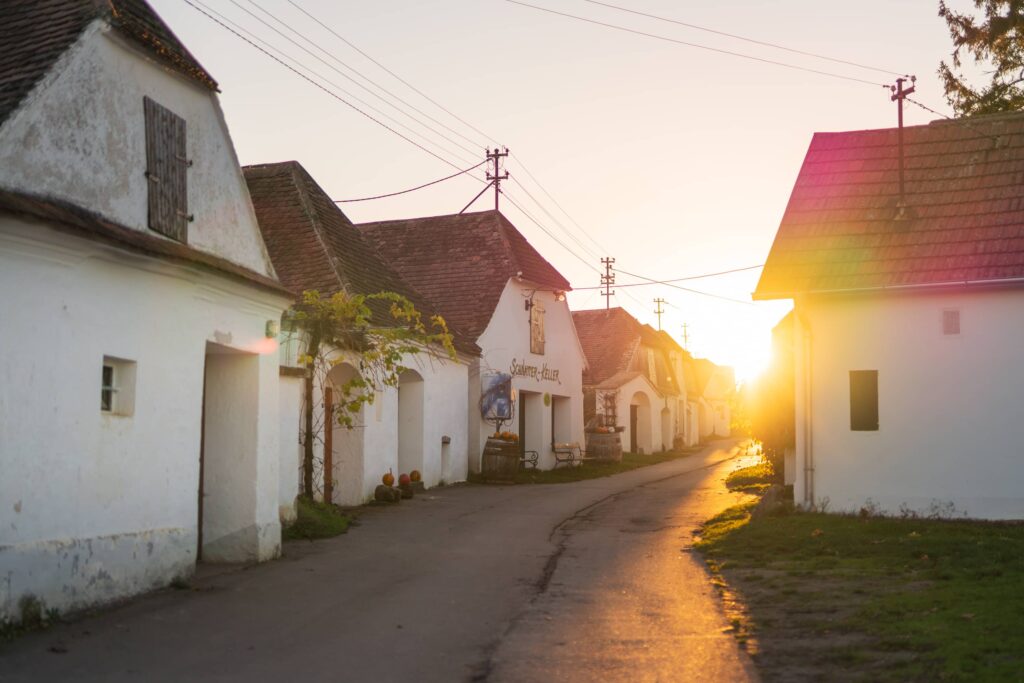
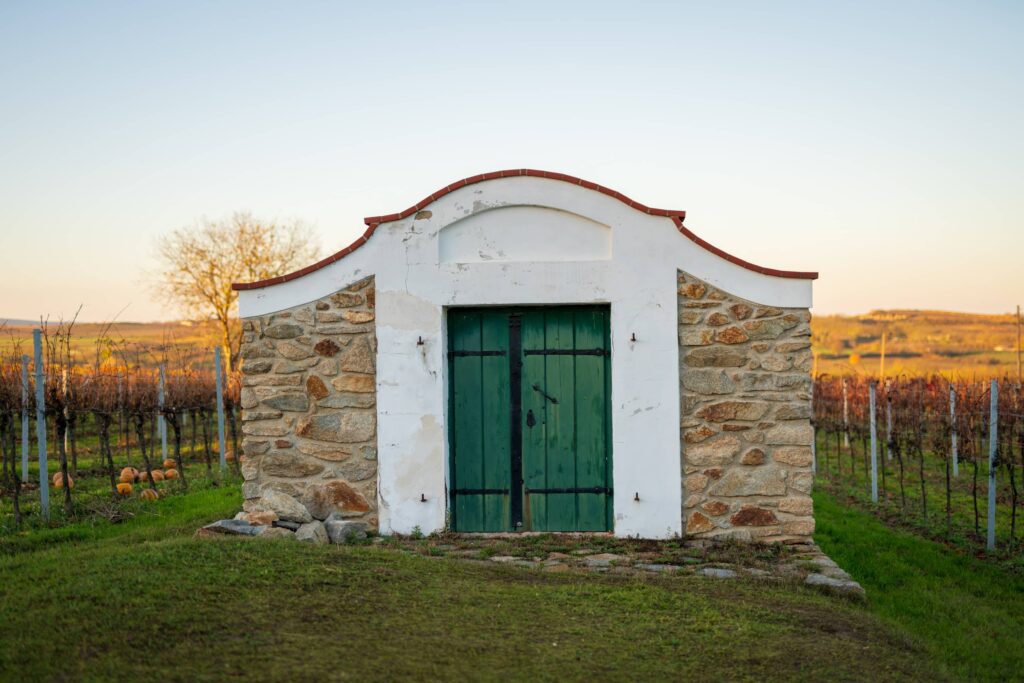
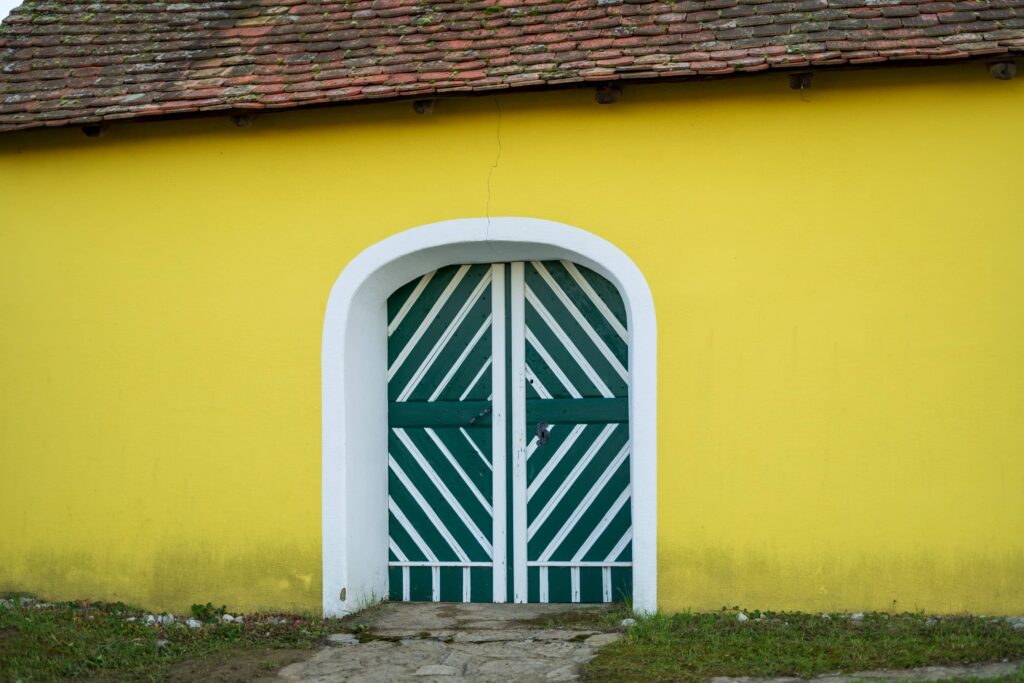
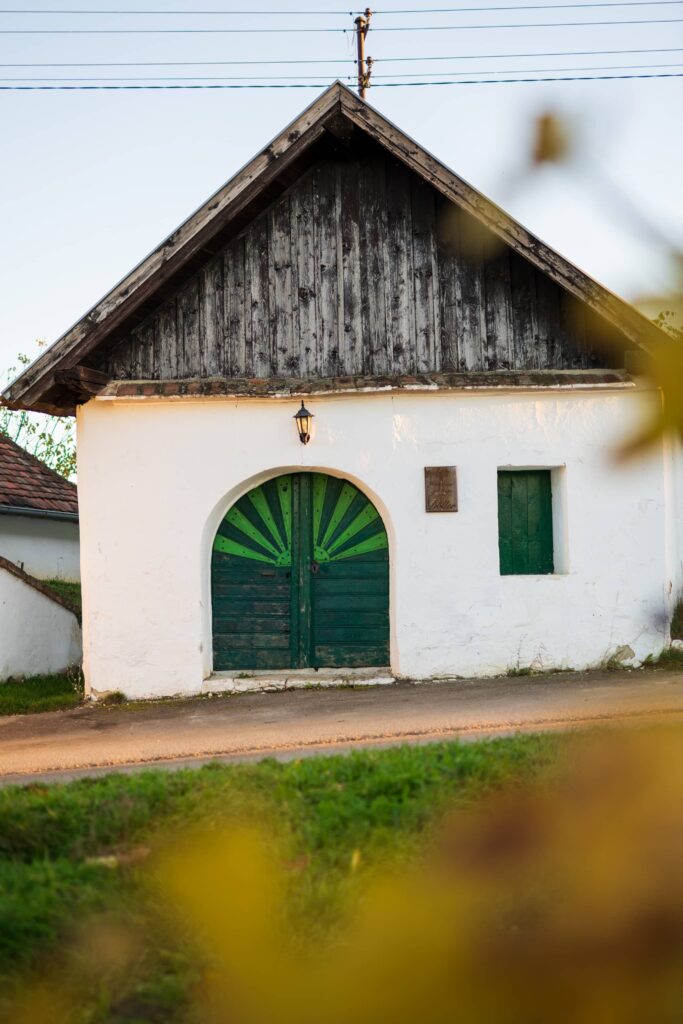
Here are a few more snaps from the Weinviertler bike tour that brought us to the Czech border.
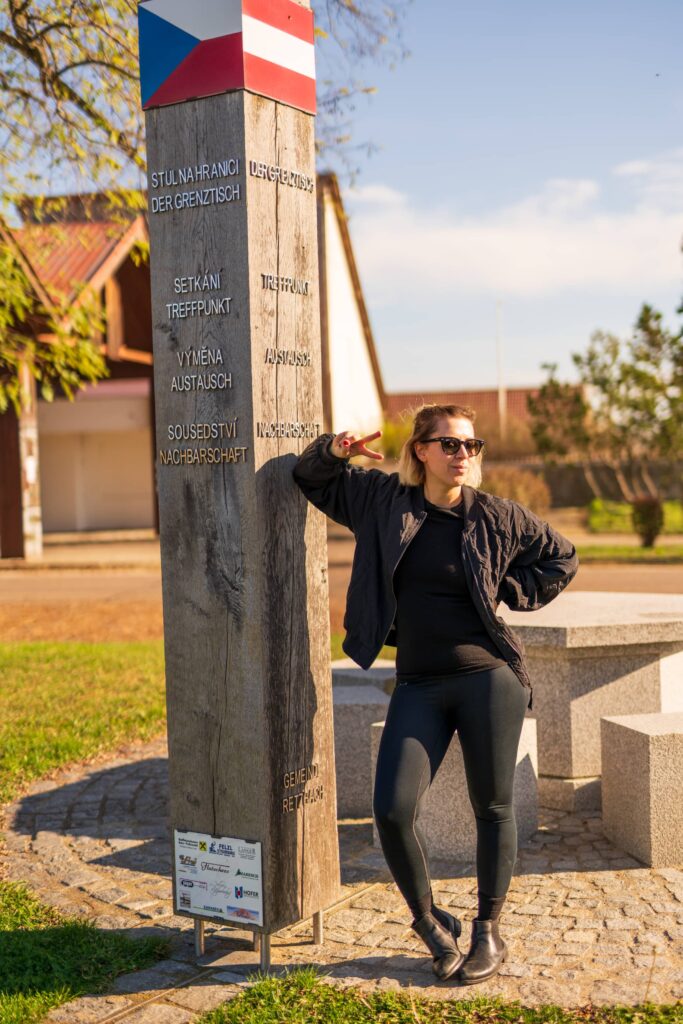
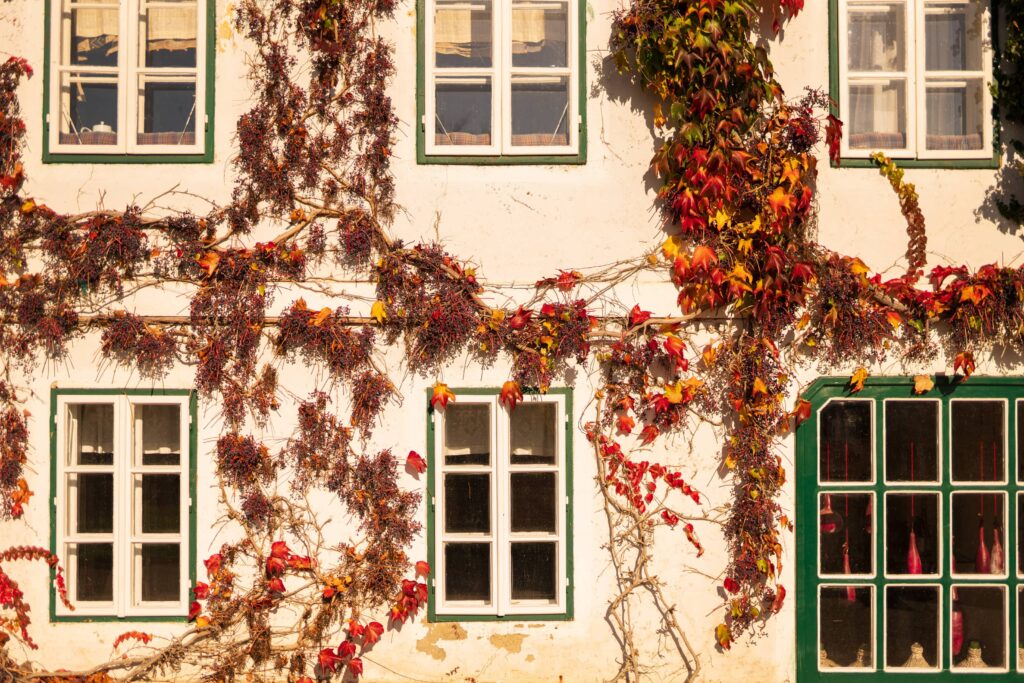
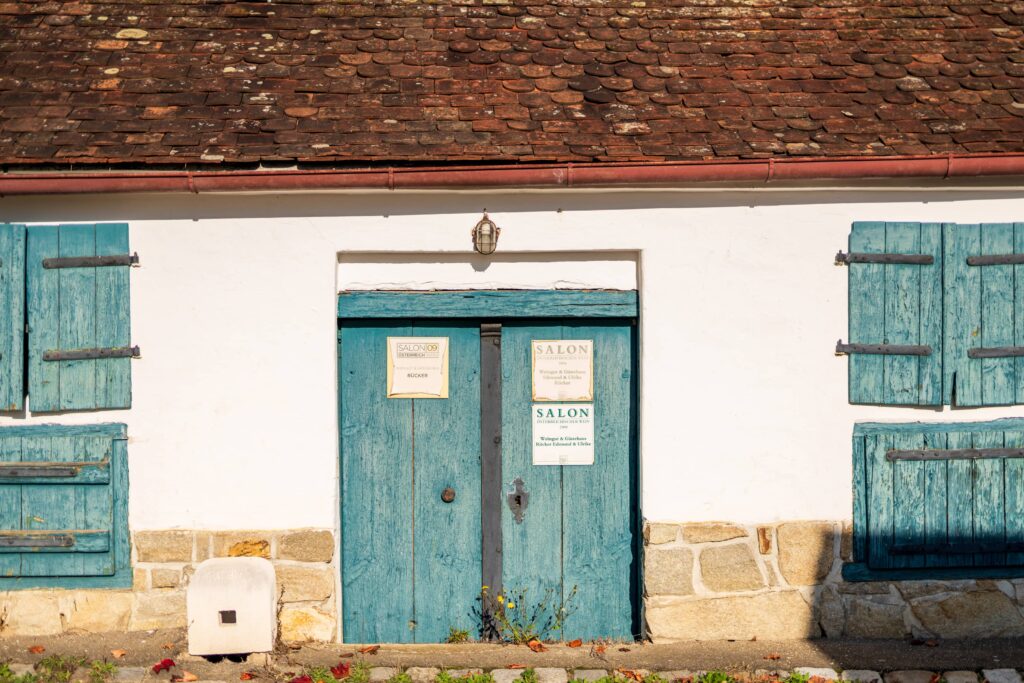
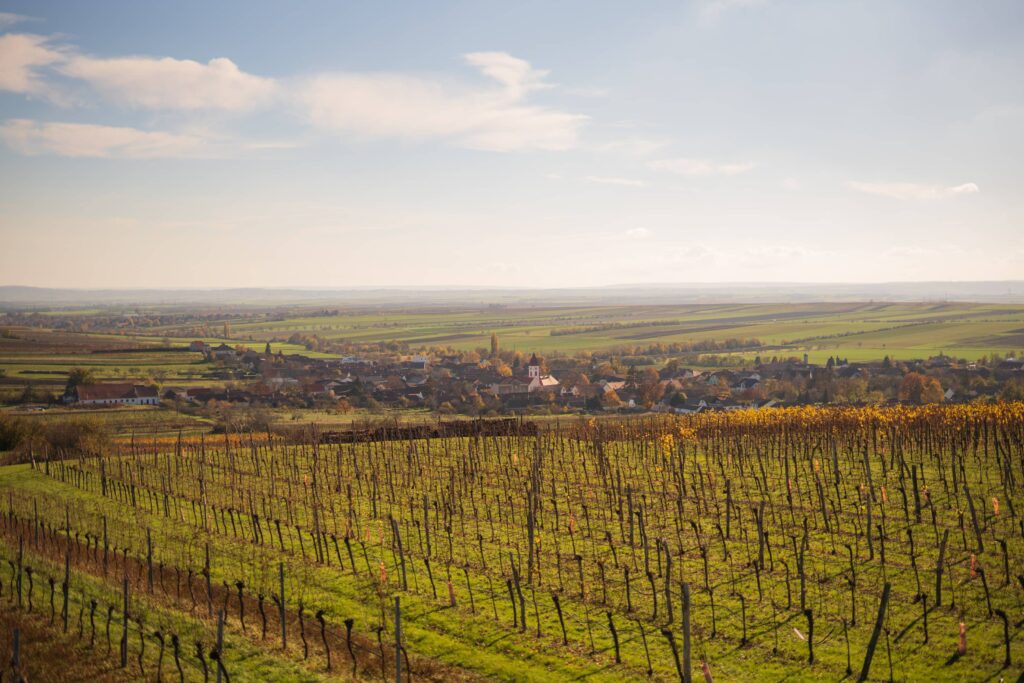
Are there any recommendations that we should add to the list? Let us know below and stay tuned for the next part!

